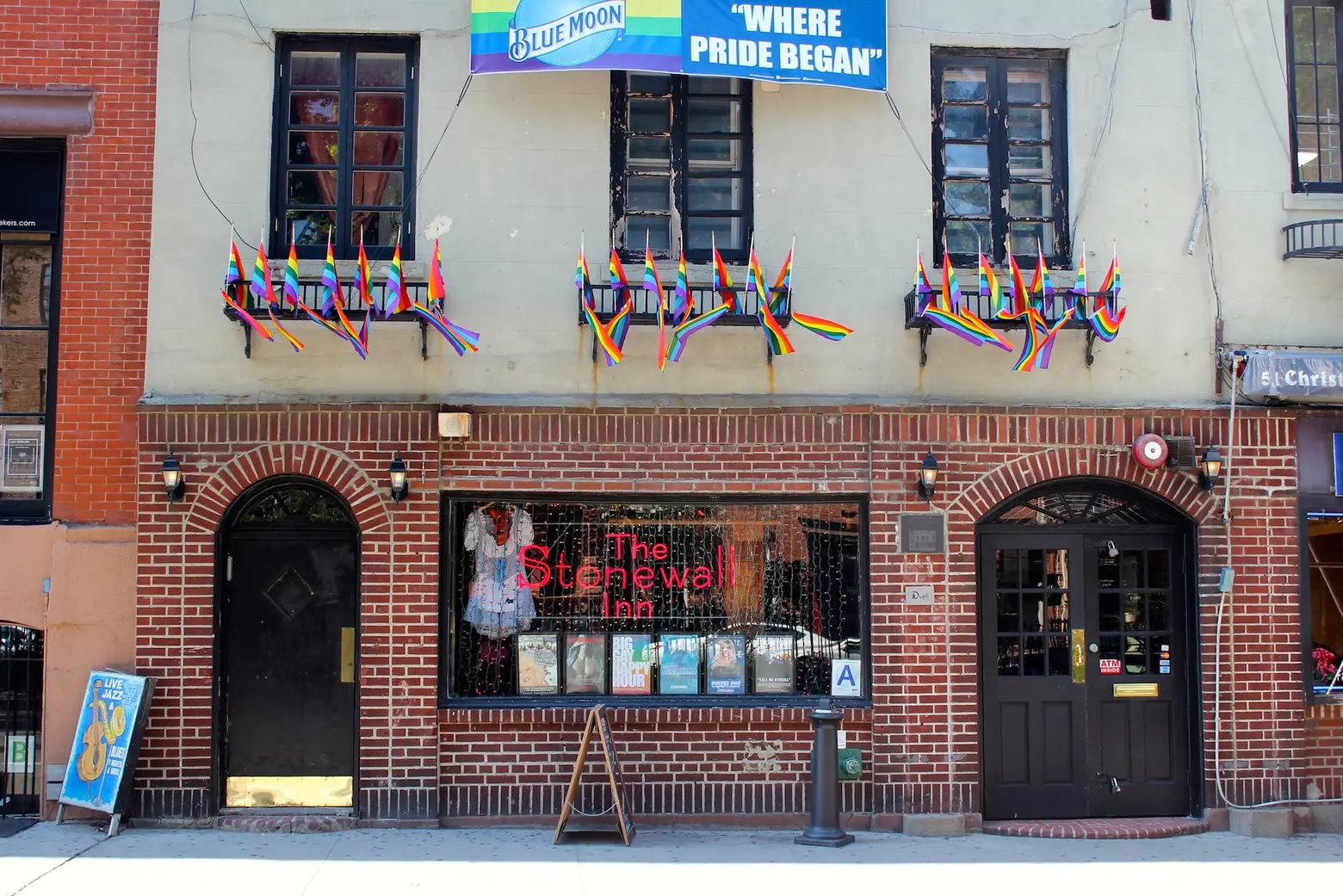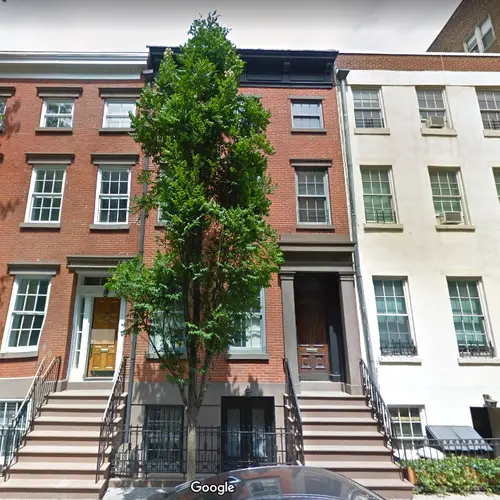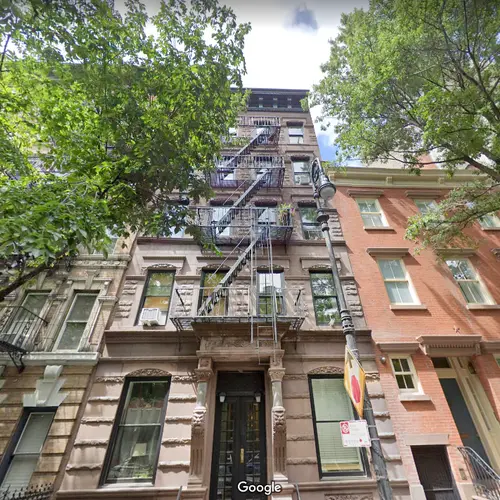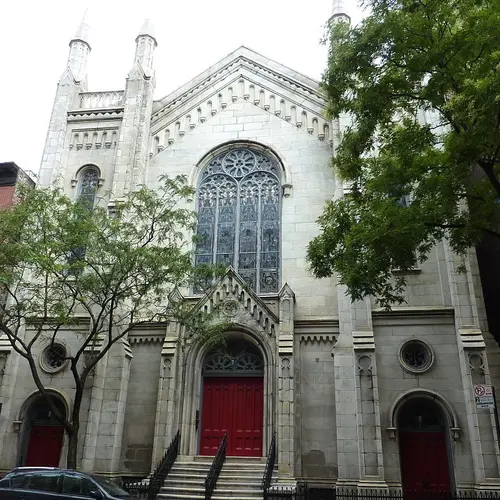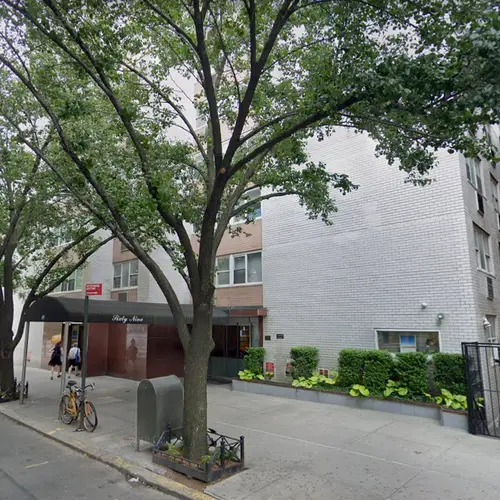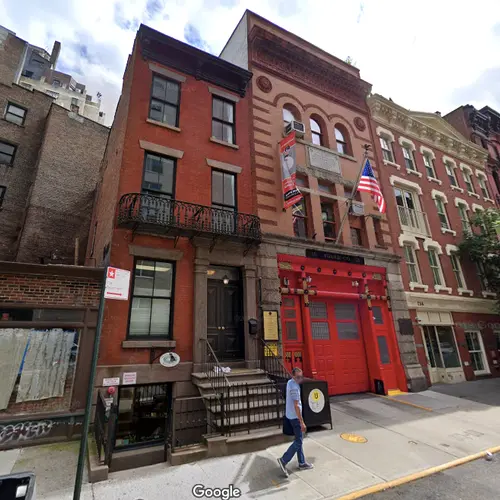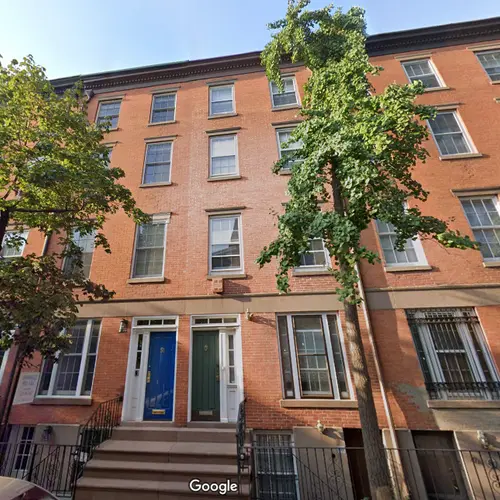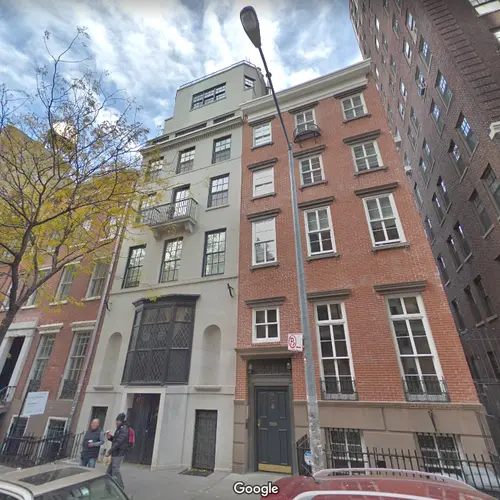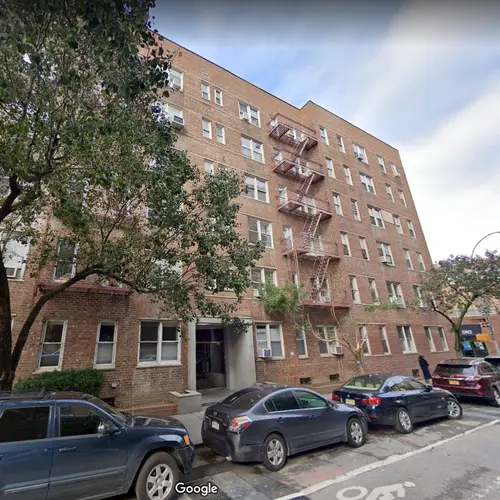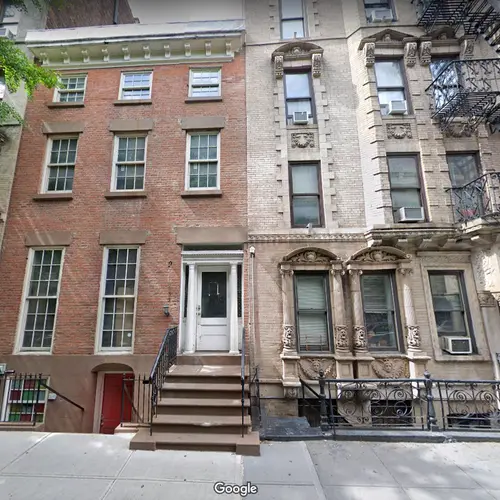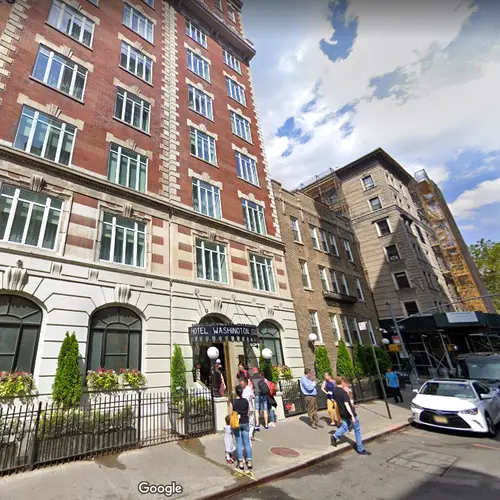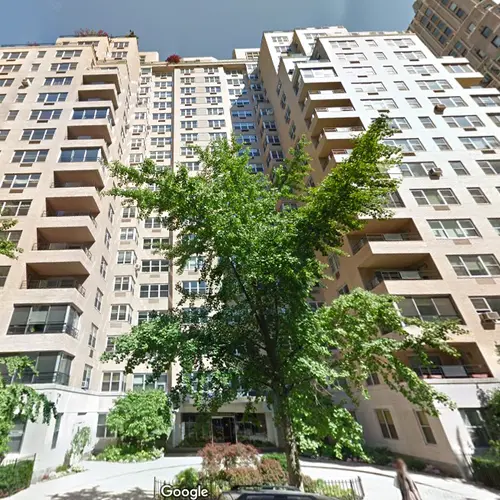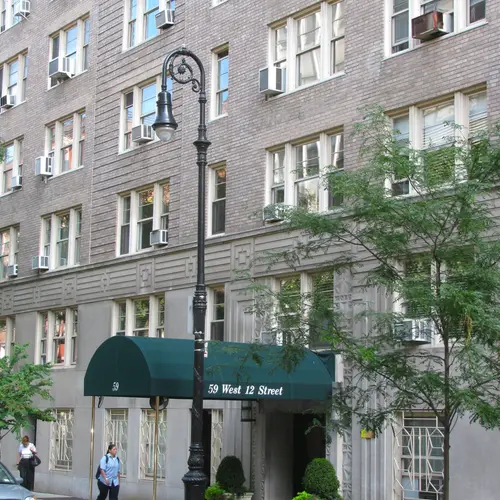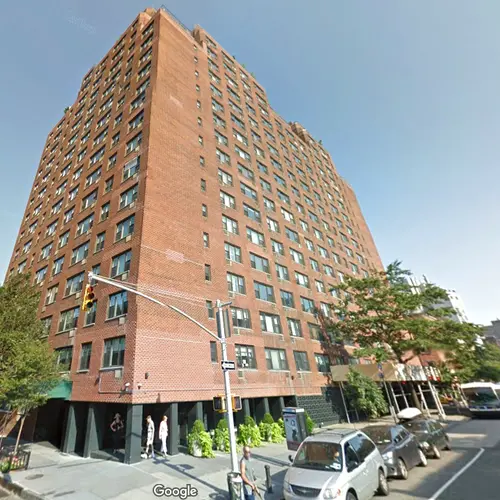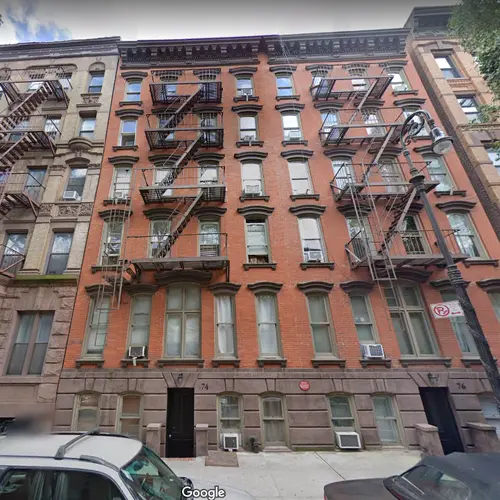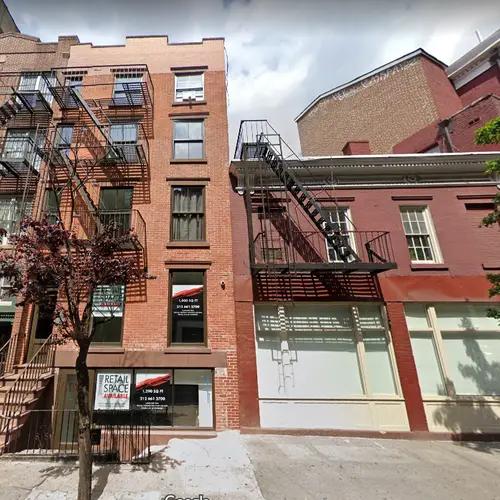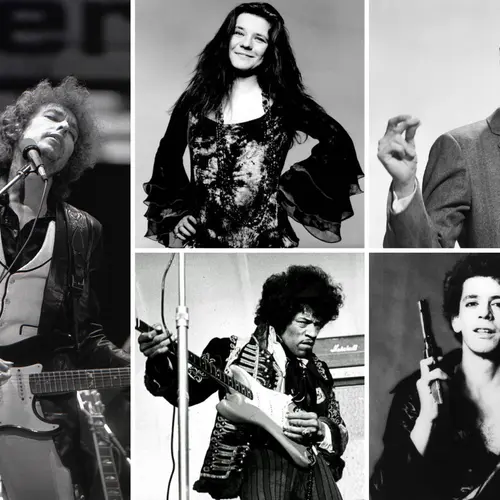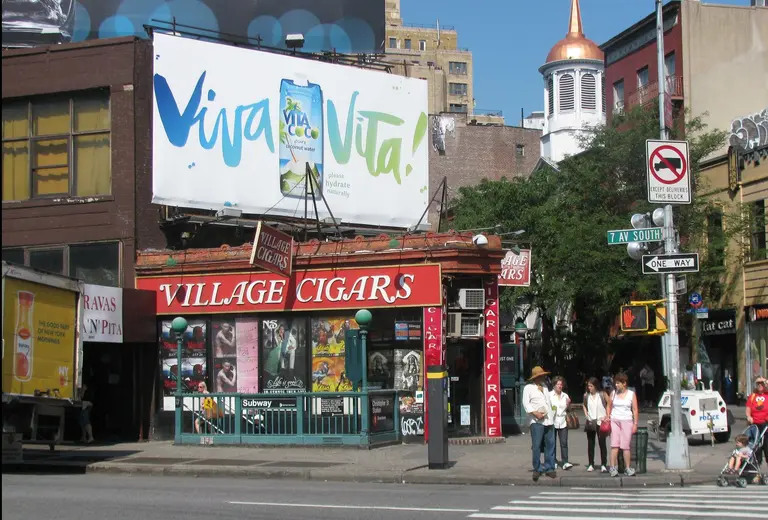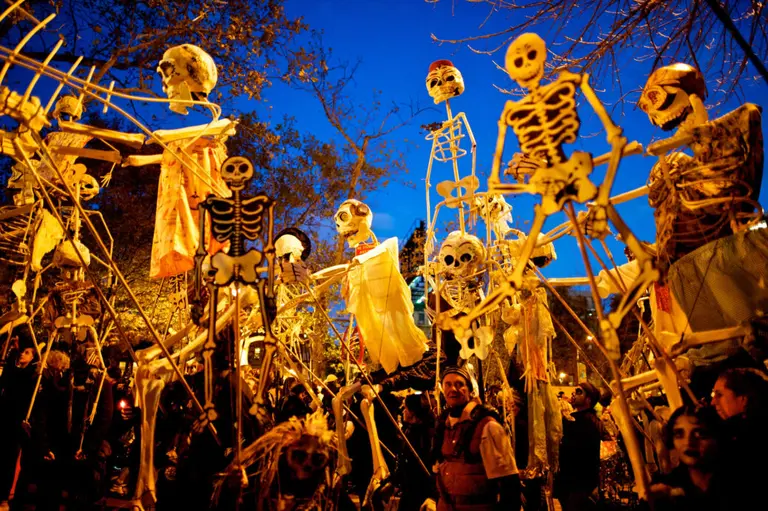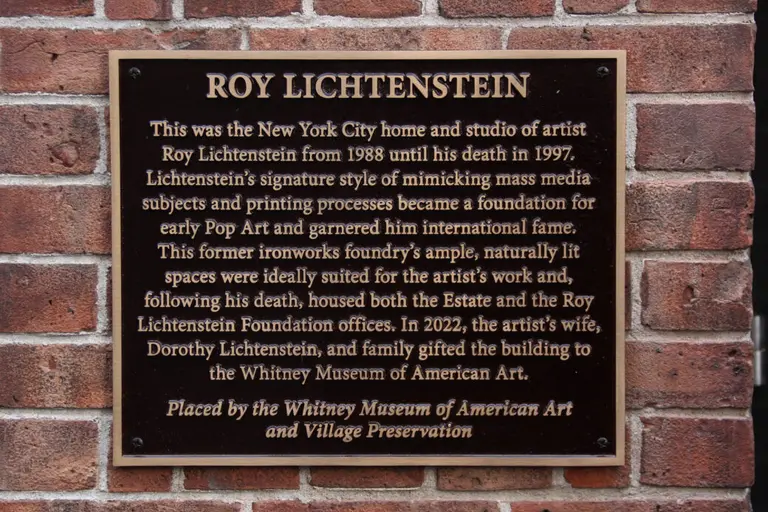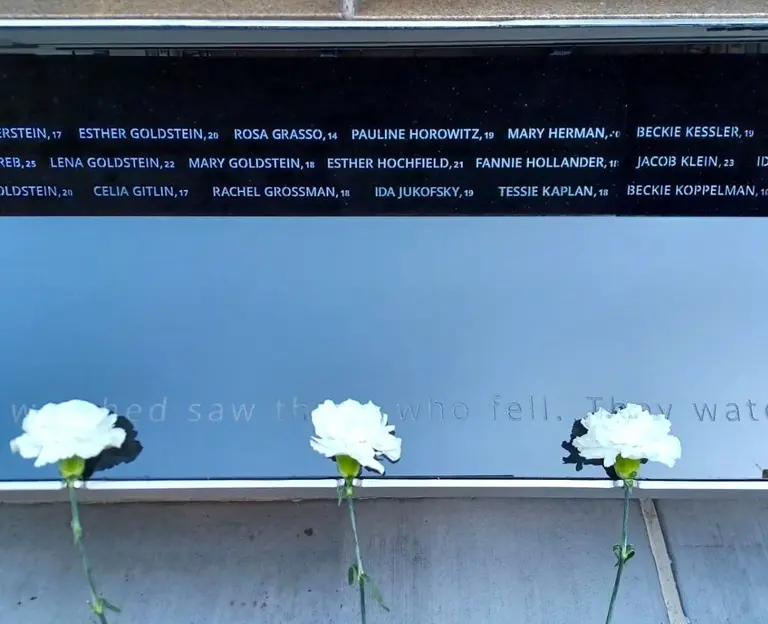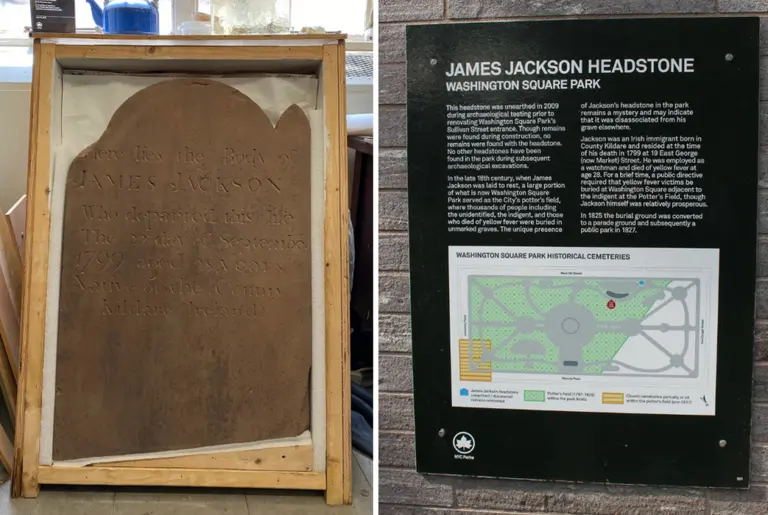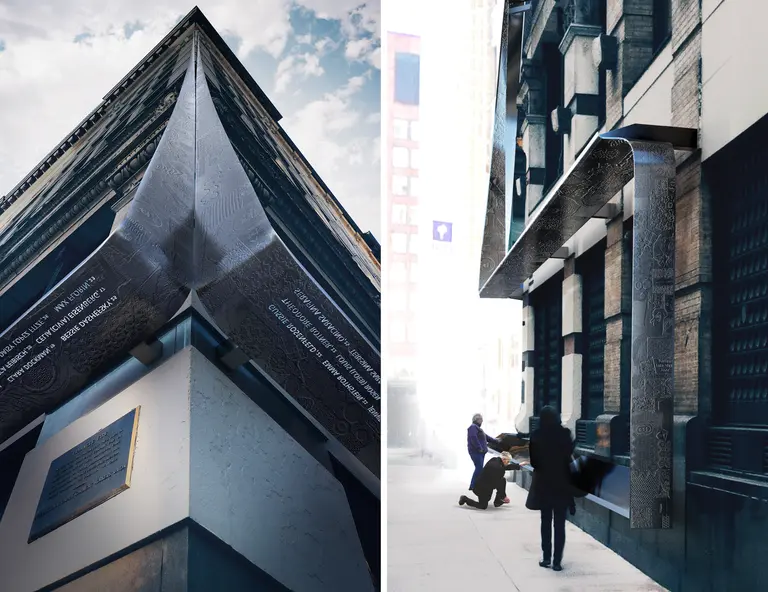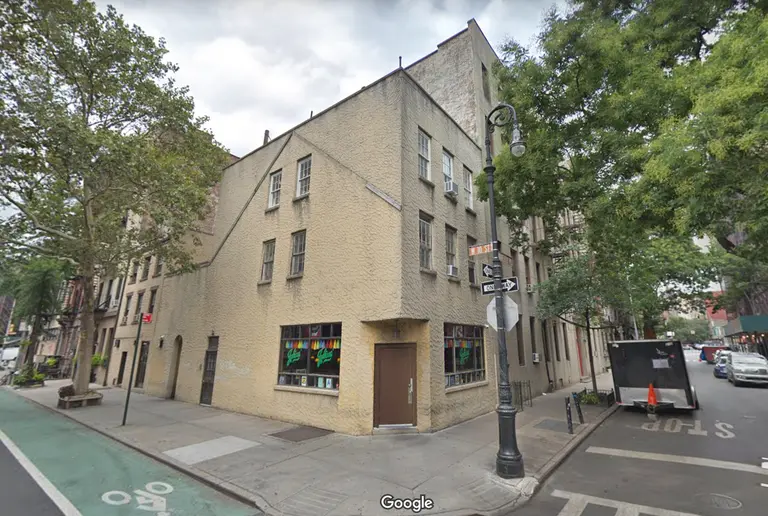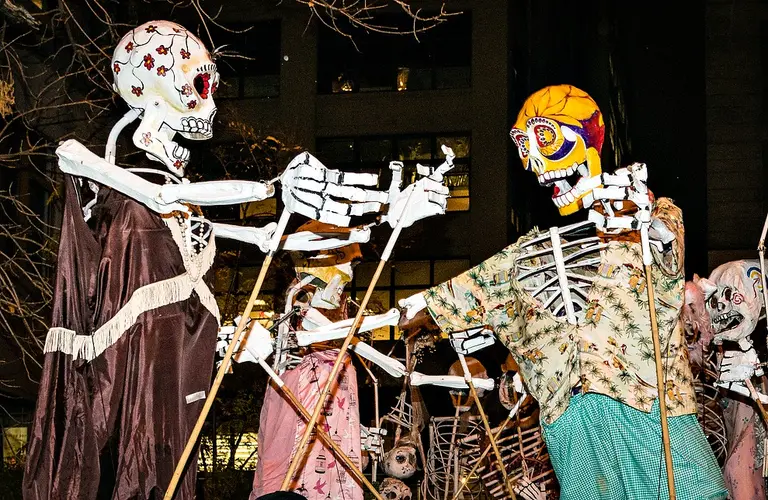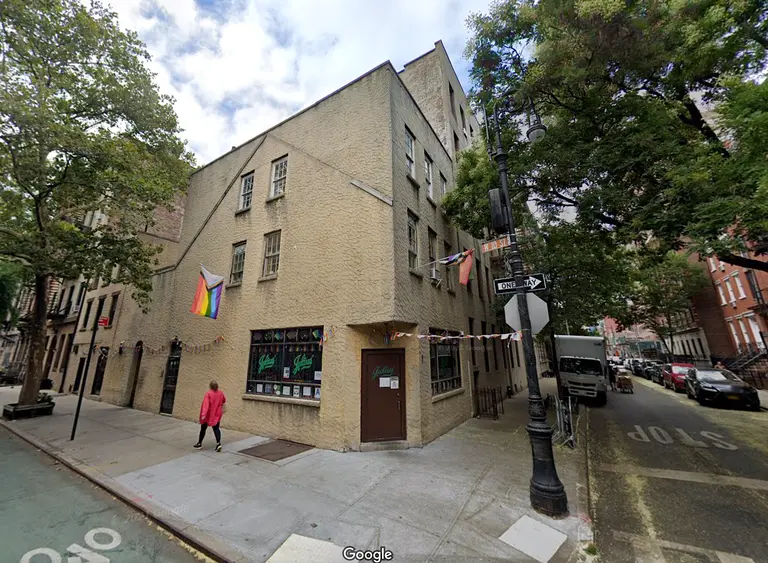17 legendary musicians who called Greenwich Village home
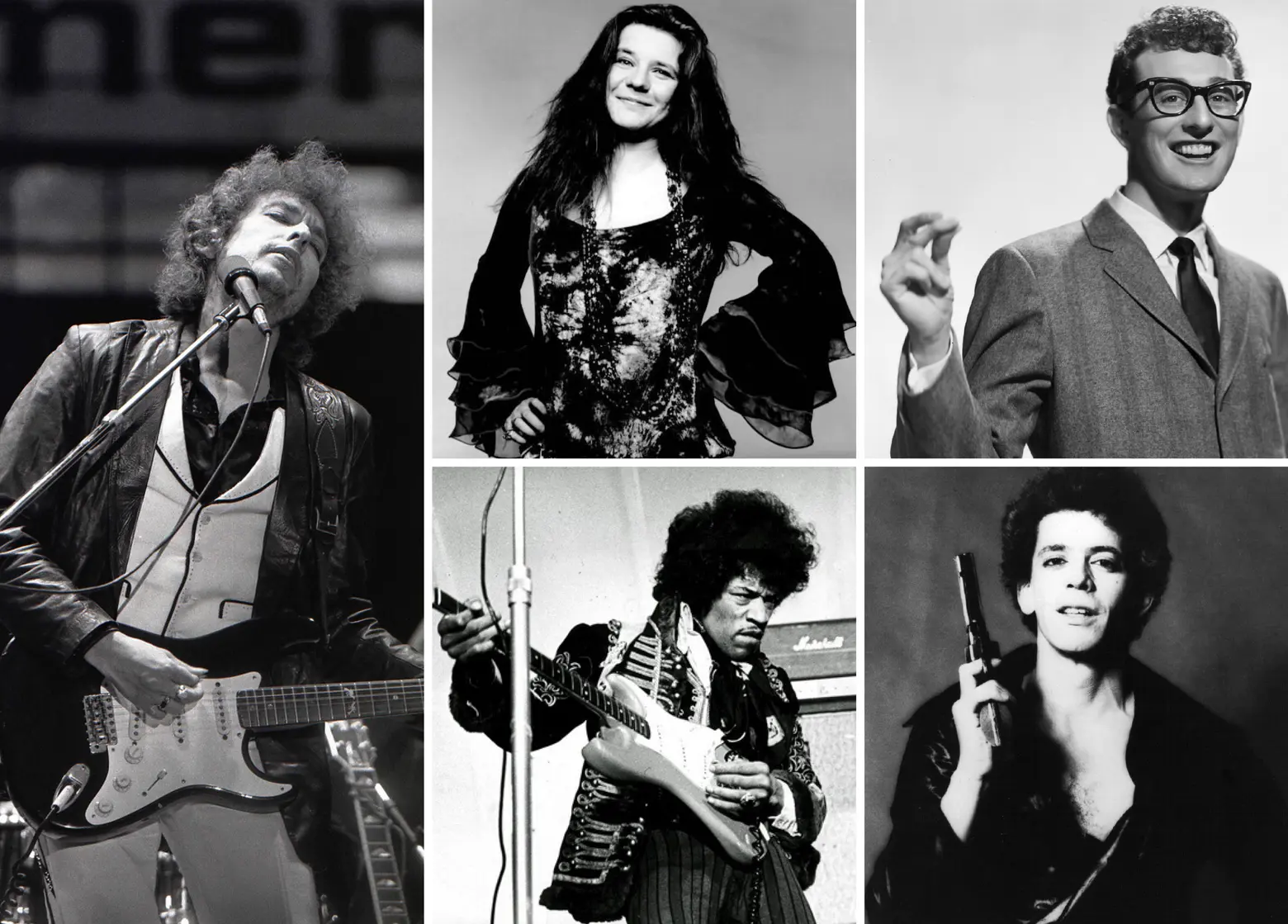
Photo of Bob Dylan by Chris Hakkens on Wikimedia, Photo of Janis Joplin via Wikimedia, Photo of Buddy Holly via Wikimedia, Photo of Jimi Hendrix via Wikimedia, Photo of Lou Reed by Mick Rock on Wikimedia
For generations, Greenwich Village, and particularly the historic district which lies at its core, has attracted musicians of all stripes. They’ve been inspired by its quaint and charming streets and the lively cultural scene located in and around the neighborhood. It would be a fool’s errand to try to name every great musician who ever laid their head to rest within the Greenwich Village Historic District’s boundaries. But as we round out a year’s worth of celebrating the 50th anniversary of the district’s designation, here are just a few of the greats who at one time or another called it home, from Bob Dylan to John Lennon to Jimi Hendrix to Barbra Streisand.
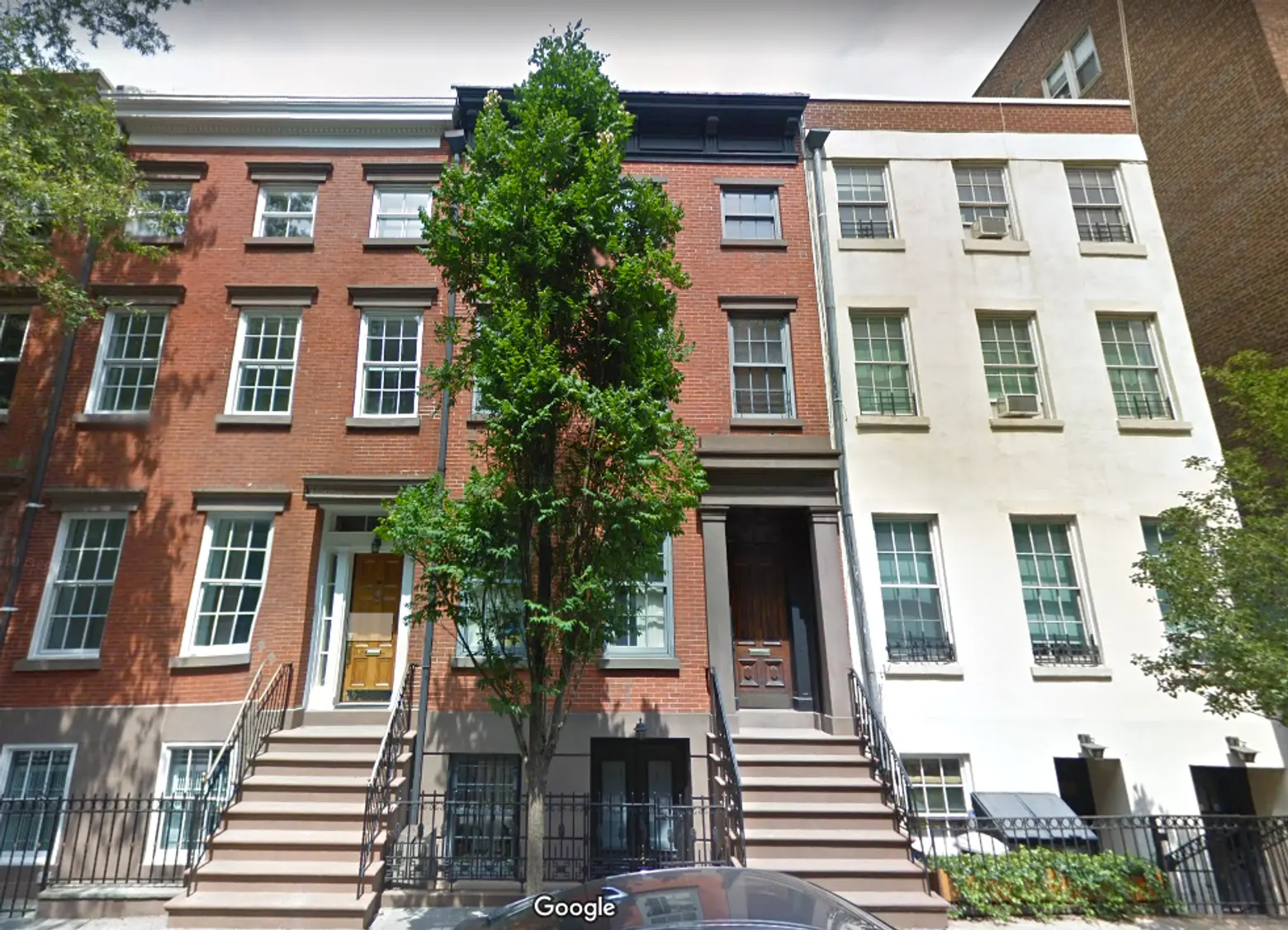
105 and 107 Bank Street; Map data © 2019 Google
1. John Lennon, 105 Bank Street
Lennon is famously associated with the Dakota Apartments on the Upper West Side, where he lived for many years and outside of which he was killed on Dec. 8, 1980. Though less well known, he also lived at 105 Bank Street, an 1846 rowhouse, from 1971 until 1972 with Yoko Ono. They rented the apartment from Joe Butler of the Lovin’ Spoonful. Ironically and sadly, Lennon and Ono moved from their Bank Street apartment, which had no security and had been broken into and robbed, to The Dakota, because they did not feel their safety could be guaranteed at their home in the Village.
Those early years on Bank Street were not the only time Lennon spent in the Village. He was known to attend lavish parties with the likes of Norman Mailer at the house of Grove Press founder Barney Rosset at 196 West Houston Street. He recorded at Electric Lady Studios, including his highly-popular collaboration with David Bowie, “Fame,” and is said to have done some recording at a former stable at 271 West 10th Street. The famous pictures of Lennon wearing his “New York” t-shirt and flashing a peace sign in front of the Statue of Liberty were shot by Westbeth artist Bob Gruen (in fact, Lennon got lost in the mammoth and labyrinthine Westbeth complex looking for Gruen one afternoon in June of 1975).
And after his murder in 1980, a massive candlelight vigil was held in Washington Square Park marking his death. Before and after his time on Bank Street, Lennon expressed his love for Greenwich Village. In fact, in a 1971 Rolling Stone interview, he said: “I should have been born in the Village! That’s where I belong!…I regret profoundly…not being born in Greenwich Village. That’s where I should have been.”
2. John Cage, 107 Bank Street
The avant-garde composer made a home at 107 Bank Street in the 1970s with his partner Merce Cunningham, whose studios were located just a few blocks away at Westbeth. Cage set the music and art world on its ear in 1952 with his experimental composition 4’33,” in which the orchestra sits silently without playing their instruments for four minutes and thirty-three seconds, and the audience is supposed to listen instead to the sounds of their environment around them. Cage’s friend John Lennon, who lived next door, reputedly would come to Cage’s home to use his phone to avoid his conversations being listened in upon by the FBI, whom we believed were surveilling him.
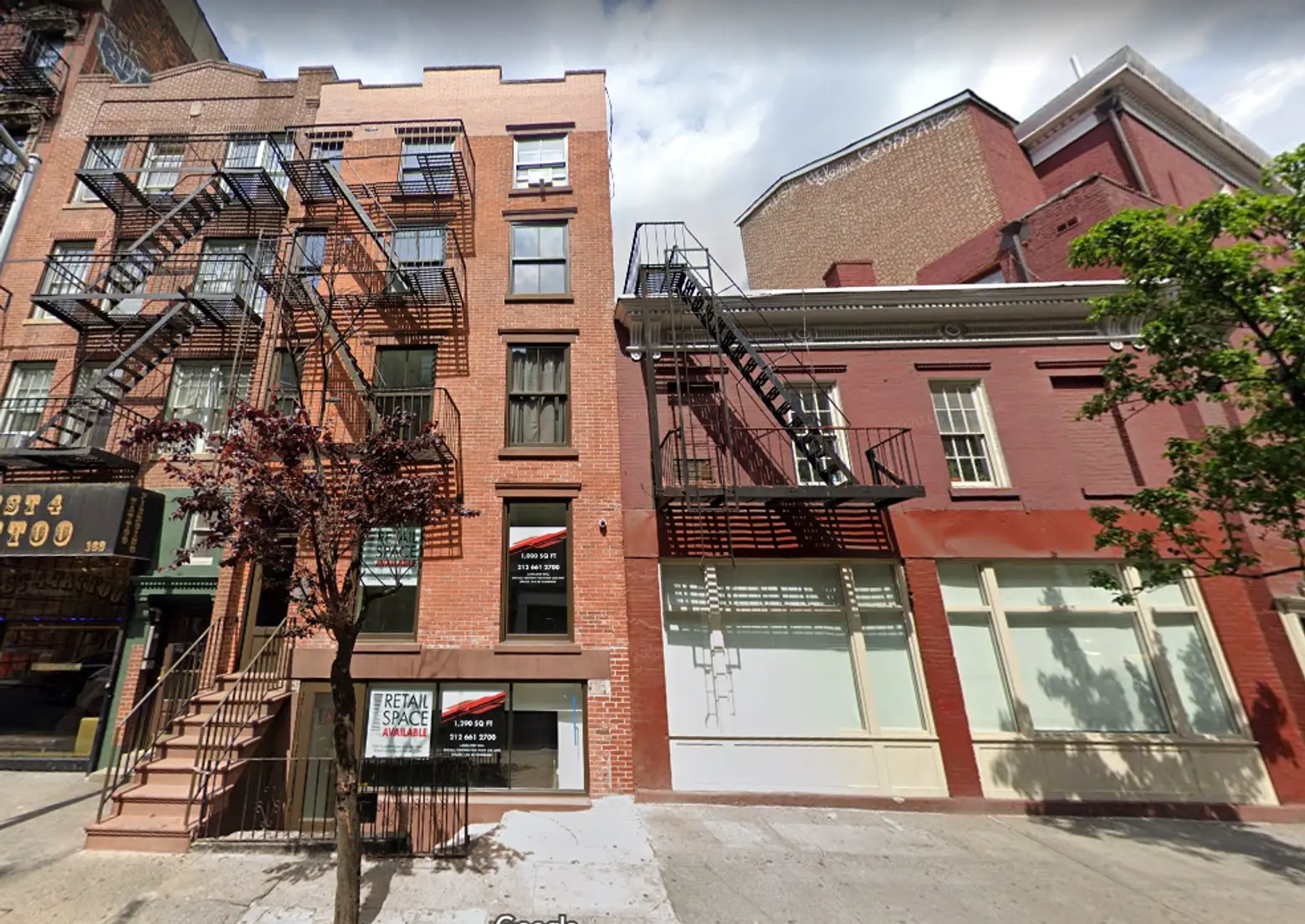
161 West 4th Street; Map data © Google
3. Bob Dylan and Suze Rotolo, 161 West 4th Street
After having spent time sleeping on couches of friends and fans, Dylan rented a small apartment at 161 West 4th Street in December 1961, where he lived with his girlfriend, Greenwich Village local Suze Rotolo. Not only was Rotolo the subject of many of Dylan’s songs such as “Don’t Think Twice, It’s All Right,” “Boots of Spanish Leather”, and “Tomorrow Is A Long Time,” she also influenced his political views. Although Dylan was interested in the politics of his folk music heroes Woody Guthrie and Pete Seeger, he was otherwise apolitical until Rotolo began to take him to Congress of Racial Equality (CORE) meetings. It was Rotolo who gave counsel on Dylan’s more politically charged songs such as “The Death of Emmett Till.” Till, a 14-year-old African American boy violently murdered for allegedly offending a white woman in her store in 1955, became an icon of the Civil Rights Movement.
The couple was photographed for the cover of Dylan’s 1963 album, The Freewheelin’ Bob Dylan, on Jones Street, right around the corner of their apartment. However, due to Dylan’s rising fame and a budding romantic relationship with Joan Baez, the couple broke up and Rotolo moved out later that year.
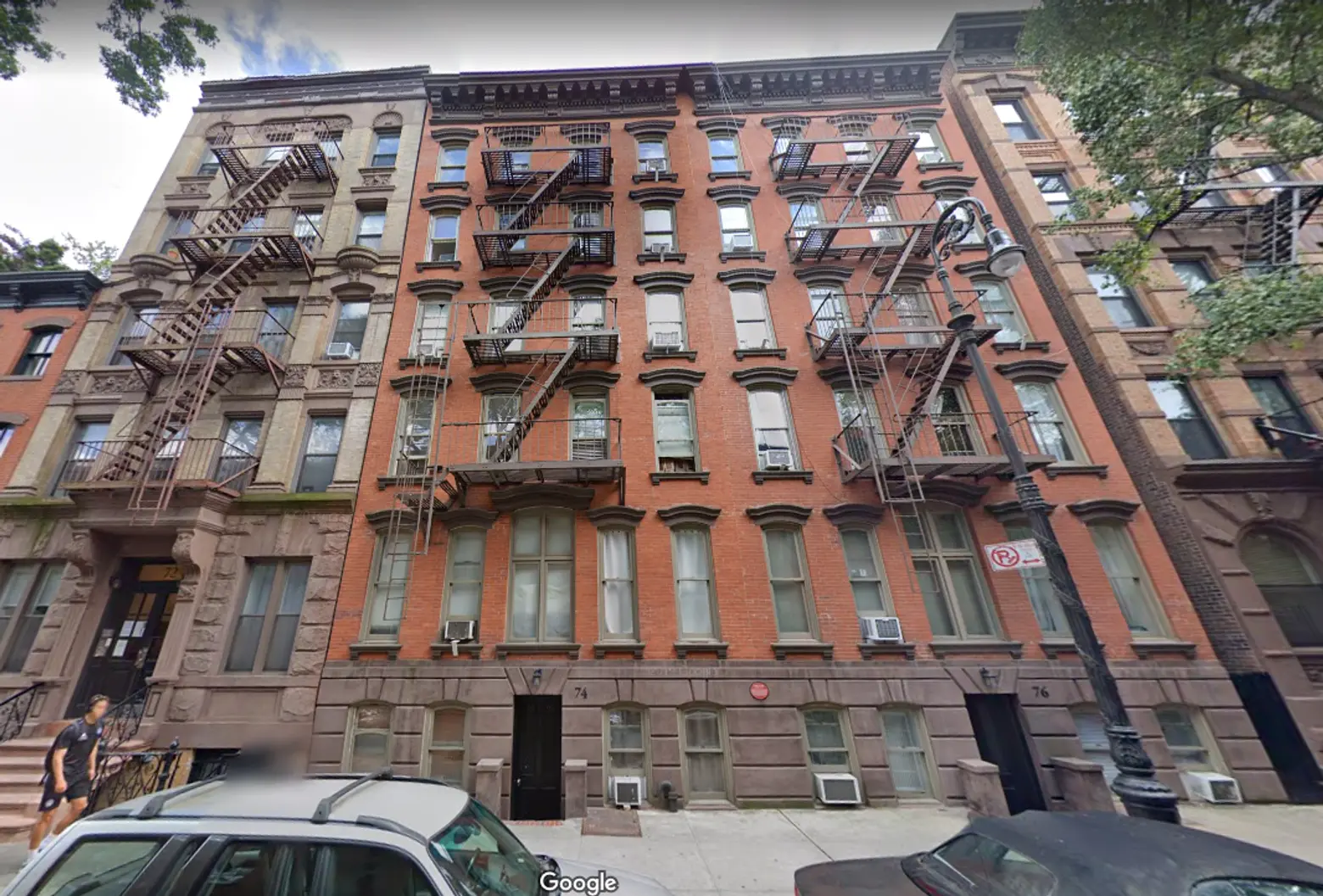
74 Charles Street; Map data © 2019 Google
4. Woody Guthrie, 74 Charles Street
Although Woody Guthrie (1912-1967) had lived in New York City for years in a succession of apartments with the Almanac Singers, 74 Charles Street was the first place that he put his name on the lease. He called his apartment “El Rancho Del Sol.” Guthrie moved in in 1942, the same year he met Marjorie Mazia, a dancer in the Martha Graham Dance Company. She and a fellow dancer approached him about performing for a show that featured some of his songs from his recently released album, Dust Bowl Ballads. The couple fell in love and lived at this apartment from December 1942 to May 1943. They were married in 1945.
Guthrie was never a member of the Communist party, swearing off any official political affiliations, but much of his music, like that of the other Almanac Singers, was imbued with political undertones. Guthrie had a particularly strong investment in the labor movement and wrote a newspaper column called “Woody Sez” for the Communist Party USA publications People’s World and Daily Worker. His songs such as “This Land Is Your Land” became anthems for the environmental movement, and he frequently performed with the words “This machine kills fascists” written on his guitar.
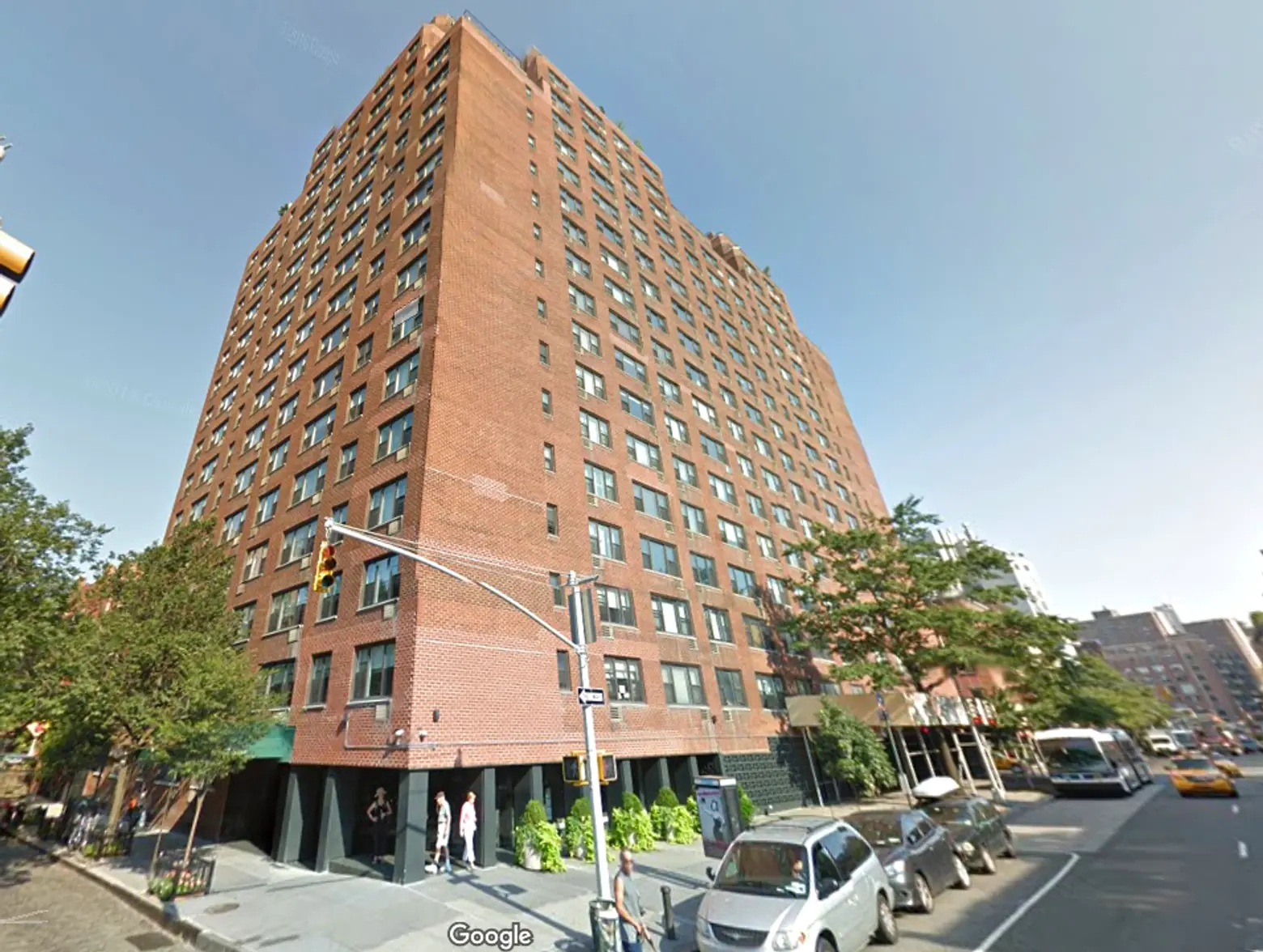
61 Jane Street; Map data © 2019 Google
5. Richie Havens, 61 Jane Street
Musician Richie Havens made his home at 61 Jane Street during his time in Greenwich Village. Havens, who was born on Jan. 21, 1941, in Bedford Stuyvesant, Brooklyn, relocated to Greenwich Village in his late teens working as a street artist drawing portraits for cash. He became a mainstay in the Greenwich Village folk singer performance circuit, playing a mix of original material and soulful covers of popular folk songs of the day. Bob Dylan recalled running into Havens on many occasions playing at clubs, noting that he always did very well when the hat was passed around for donations.
Havens is perhaps best remembered for providing the opening performance of the 1969 Woodstock Music Festival. He wasn’t scheduled to play first. However, the opening group was stuck in traffic and the concert’s co-organizer Michael Lang begged him to play for the eager crowd. Havens would later recall that he and his band ran out of material after their sixth song and improvised by playing Sometimes I Feel Like a Motherless Child, a gospel song that he had learned at church growing up. It was this on-the-spot rendition that became immortalized in the documentary film, “Woodstock,” released the following year.
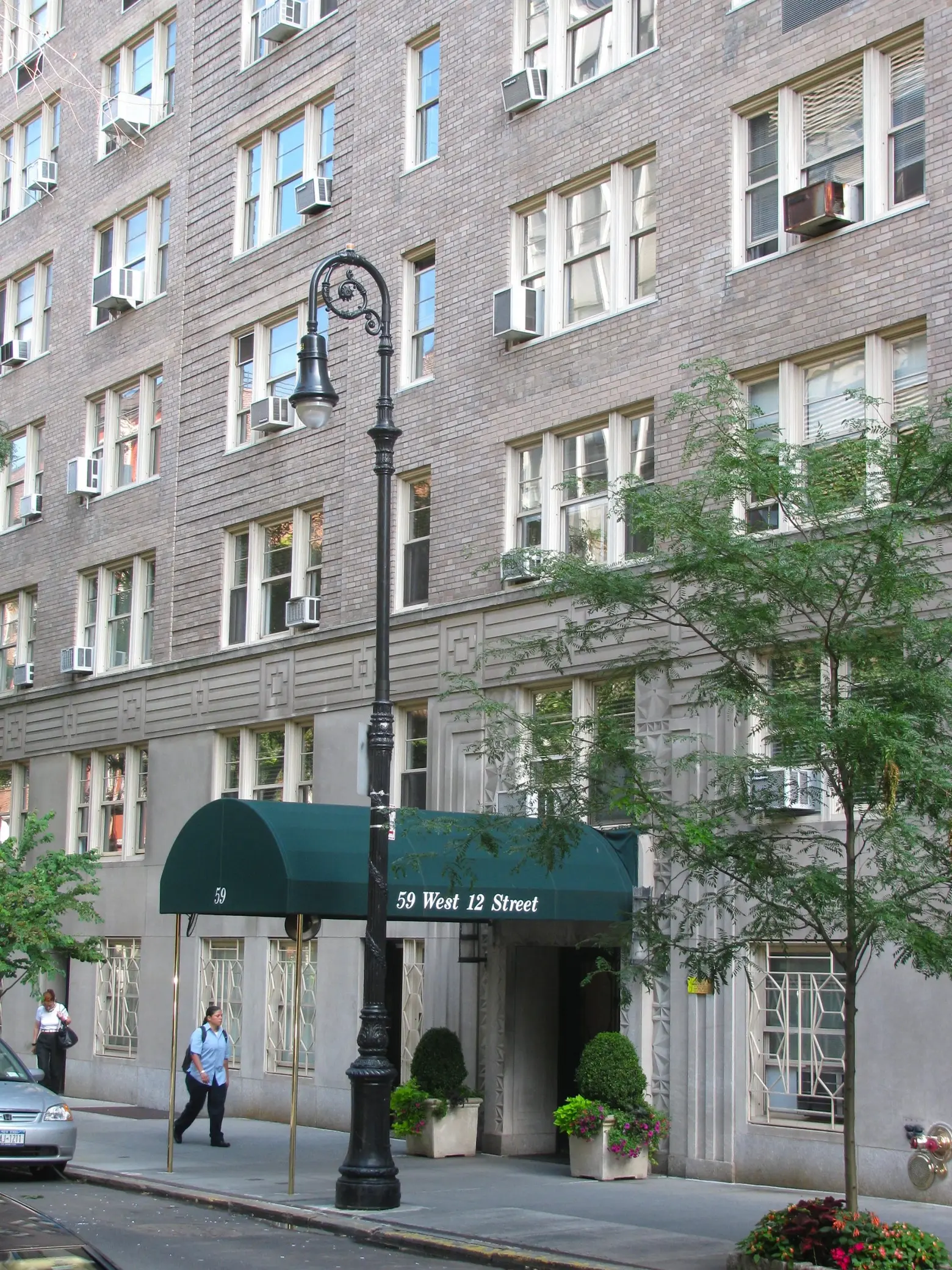
59 West 12th Street; Photo by Eden, Janine, and Jim on Flickr
6. Jimi Hendrix, 59 West 12th Street
Jimi Hendrix, born on Nov. 27, 1942, began renting this apartment at 59 West 12th Street in 1969 during an intense period of touring which included performing at the Woodstock music festival. Hendrix would come to Greenwich Village for respite and to continue developing Electric Lady Studios at 52 West 8th Street while staying here. Electric Lady Studios was located in the building which formerly housed the nightclub Generation which Hendrix purchased in 1968. It was the first artist-owned recording studio of its time.
Hendrix would stay at the 12th Street apartment intermittently with one of his girlfriends, Devon Wilson. Mitch Mitchell, Hendrix’s drummer at the time, also crashed there occasionally. After the closing of a European tour in early September 1970, Hendrix returned to London with a few of his bandmates. On Sept. 18, 1970, Hendrix died in London from drug-related complications.
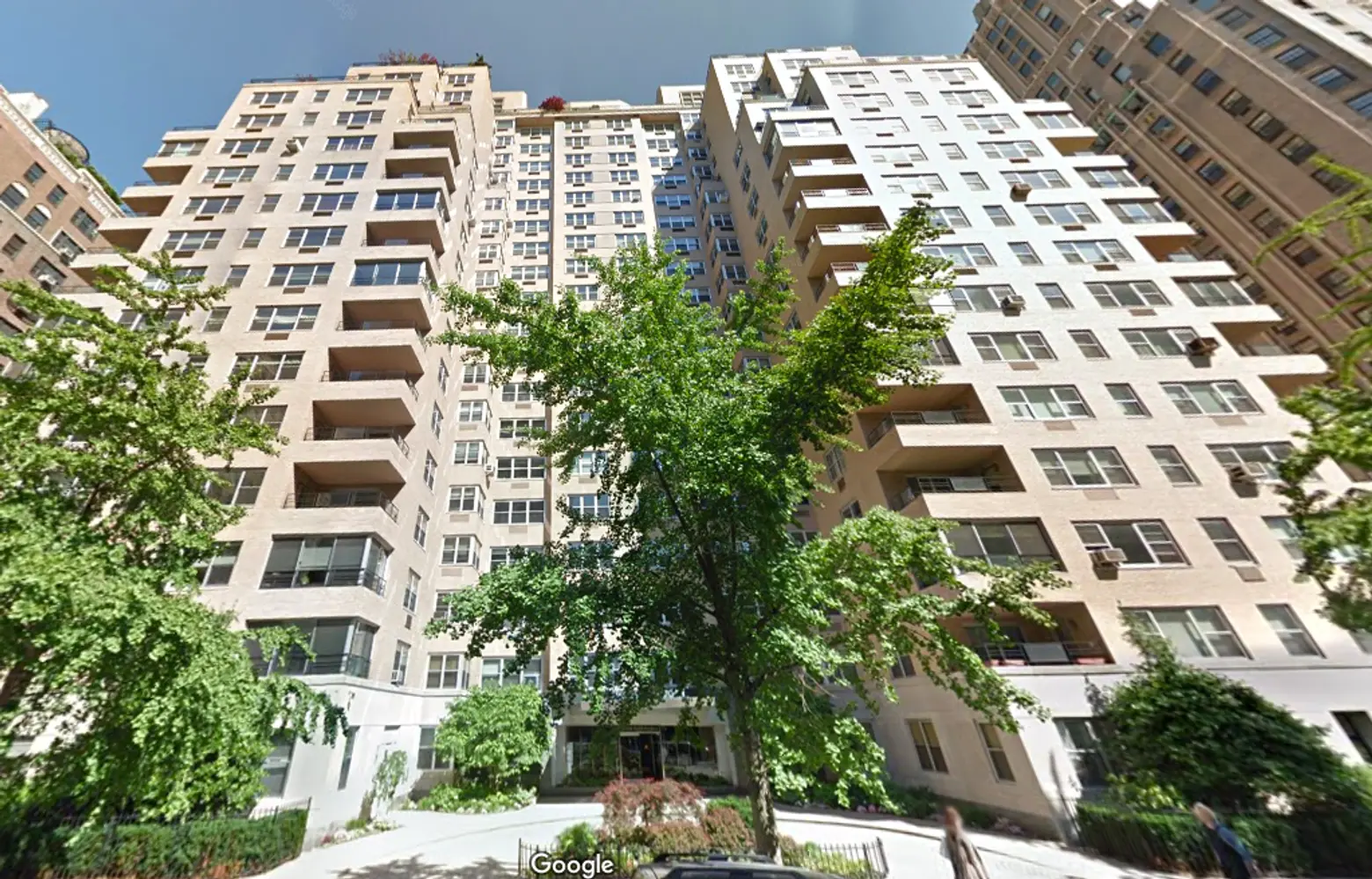
5th Avenue; Map data © Google
7. Buddy Holly, 11 Fifth Avenue
Buddy Holly (Charles Hardin Holley) was born on Sept. 7, 1936, in Lubbock, Texas. He was an American musician, singer, songwriter, and producer who was one of the pioneers of Rock and Roll as it emerged in the 1950s. Those who cite him as a direct influence include the Beatles, the Rolling Stones, Eric Clapton, and Bruce Springsteen. He was one of the first inductees into The Rock and Roll Hall of Fame in 1986, alongside Sam Cooke, Elvis Presley, Ray Charles, James Brown, Jerry Lee Lewis, The Everly Brothers, Little Richard, Chuck Berry, and Fats Domino. Holly was also a resident of Greenwich Village towards the end of his life. During his brief time here and prior to his tragic death in February of 1959, Holly would write and record in his Greenwich Village apartment his famous last recordings, ‘The Apartment Tapes.”
Shortly after parting ways with his band The Crickets, Buddy Holly and his wife Maria Elena Santiago moved from Texas to New York City in October of 1958, seeking a fresh start and the chance to be part of the local music scene. They found an apartment in the then-recently built Brevoort at 11 Fifth Avenue. Greenwich Village at that time was precisely the type of environment the Hollys were seeking — one which encouraged creativity and eschewed middle-class mores, particularly those that frowned upon cross-ethnic marriages such as the Hollys.
Maria Elena, in a 1993 interview, described the young couple’s time in the Village. They were night owls who took to wandering their new Bohemian neighborhood, frequenting coffeehouses and listening to poetry readings and folk singers. Buddy was a big fan of jazz, and the Five Spot, the Half Note, the Village Gate, and the Village Vanguard were among his haunts. Many mornings, Buddy would take Maria Elena and his Gibson guitar to the fountain at Washington Square Park. Wearing dark sunglasses so as to not be recognized, he would play with young musicians there and give them pointers. The Holly apartment served as a stopover for fellow musician friends such as Phil Everly and Waylon Jennings.
In December 1958 and January 1959, before he went on his Winter Dance Party Tour (during which he would tragically die in a plane crash), Buddy wrote and recorded on his Ampex home tape recorder in the apartment a series of songs including “That Makes it Tough,” “The Learning Game,” “Crying, Waiting, Hoping,” and most famously “Peggy Sue Got Married.”
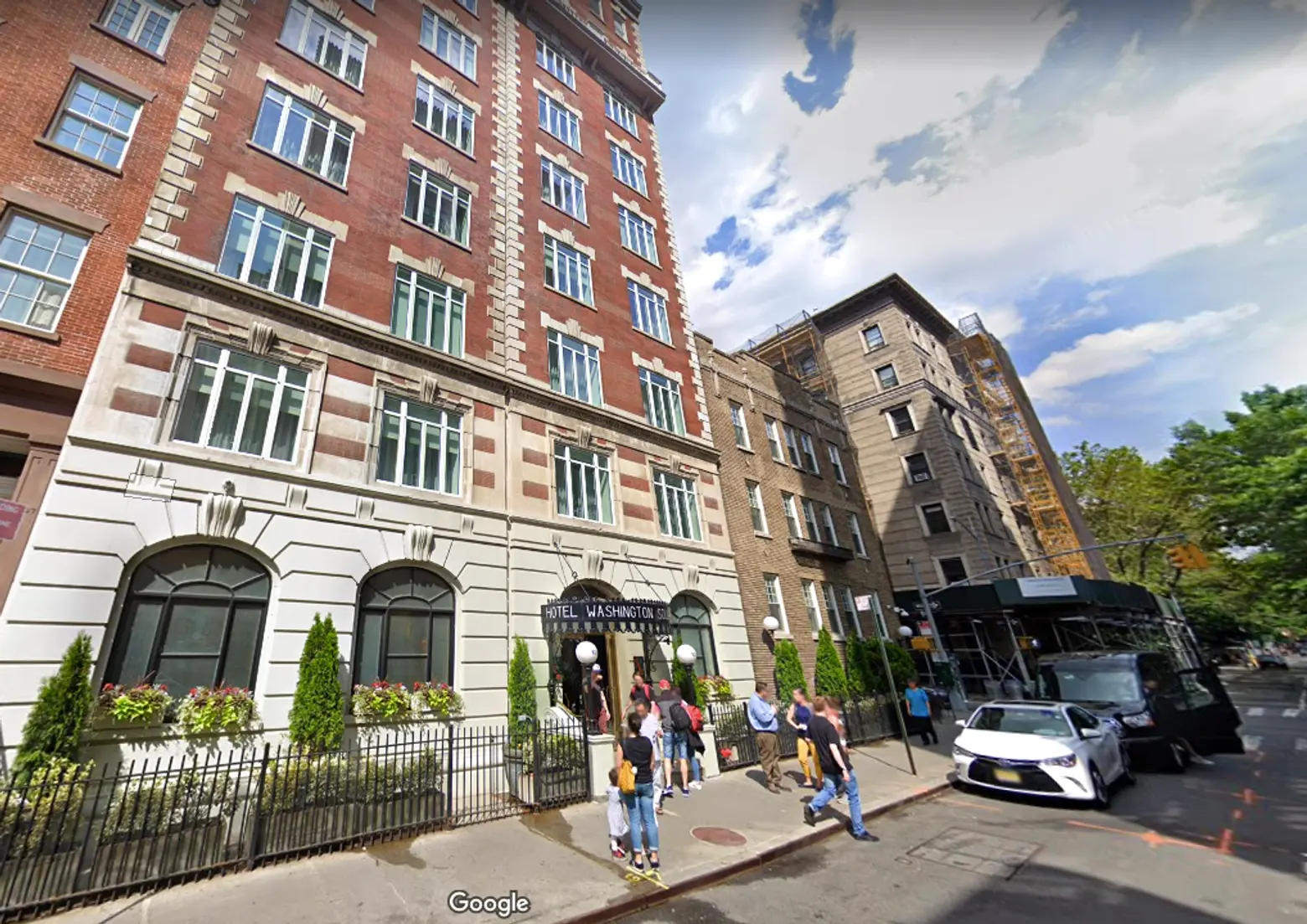
Washington Square Hotel; Map data © 2019 Google
8. Hotel Earle/ Washington Square Hotel, 101-105 Waverly Place
Some of the most iconic names in early rock and roll rented rooms at the Hotel Earle, including Bo Diddley, who stayed there “every time he played in NYC,” and the legendary Chuck Berry. In 1964 when the Rolling Stones had their first American tour the Hotel Earle served as “their home base” for the New York leg.
Perhaps most notably (or a least most documented), Bob Dylan stayed at the Washington Square Hotel. He first rented a room there in 1961, the year he arrived in New York and shortly before his first “major gig” at Gerde’s Folk City. His stay cost him $19 a week. Three years later he returned to the Hotel Earle with Joan Baez. The couple shared Room 305 and, countless sources will tell, Baez recalls their stay in “Diamonds and Rust,” describing “that crummy hotel / Over Washington Square.”
John and Michelle Phillips of the Mamas and the Papas took up residence here, too, and wrote their classic “California Dreamin’” there. John Phillips tells the story of walking around New York in the snow with Michelle, a Southern Californian miserable in the cold. Inspiration for the song struck in the middle of the night at the Hotel Earle (though some versions of the story say it was the Hotel Albert on University Place).
Other notable musicians like Joni Mitchell, Barbra Streisand, and Dee Dee Ramone also spent time at this “seedy apartment hotel.” Purchased in 1973 by Daniel Paul and his family, the hotel has been lovingly restored since its rougher, artist-filled years and remains a family-operated business.
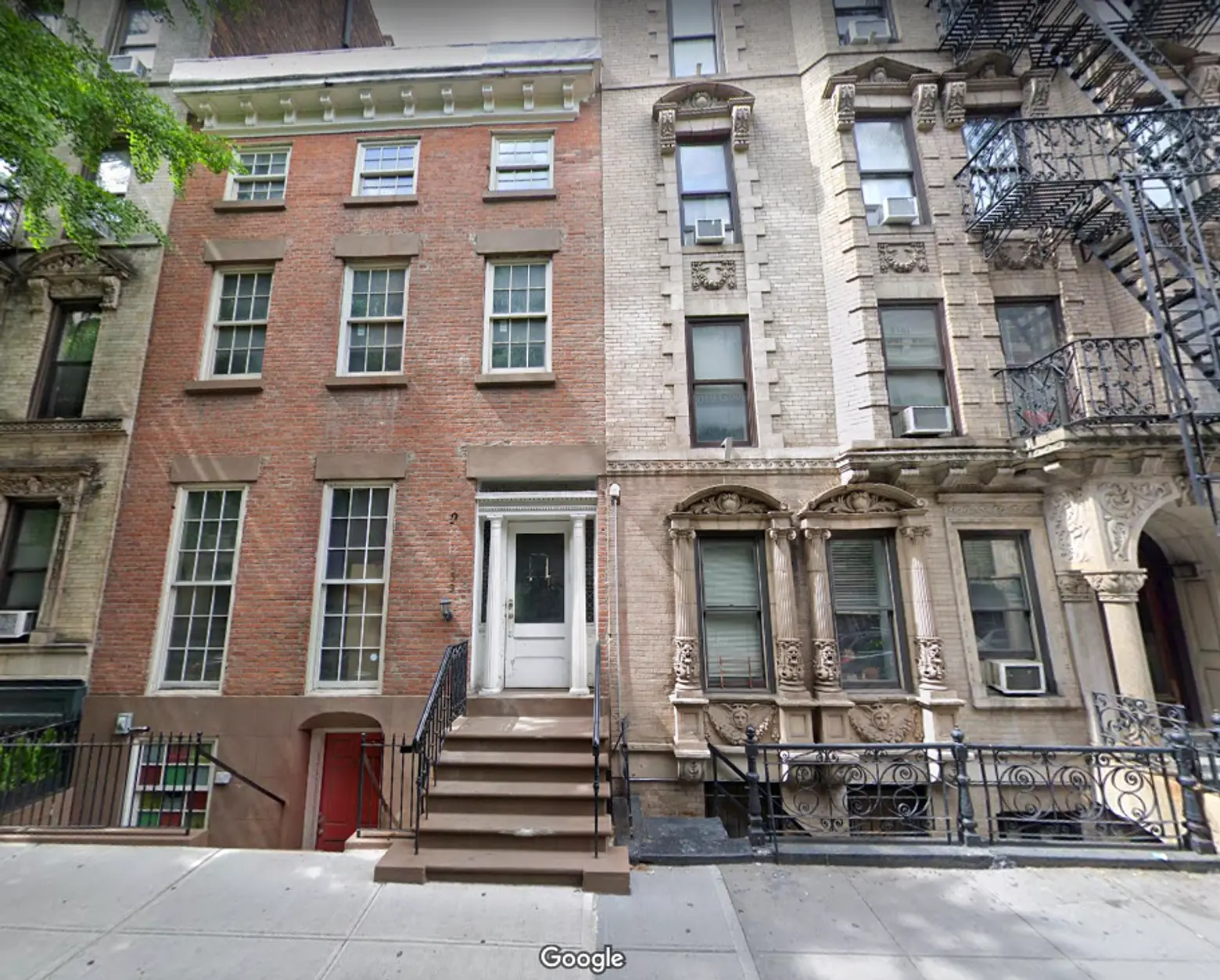
139 West 10th Street; Map data © 2019 Google
9. Janis Joplin, 139 West 10th Street
Janis Joplin (1943-1970) lived here at 139 West 10th Street briefly before her death in 1970. During her time here, a steakhouse called the Ninth Circle, owned by Mickey Ruskin of Max’s Kansas City was located in the basement of the building. Jimi Hendrix frequented the place, as would Joplin herself, on occasion also performing for customers. Joplin was also known to stay at the Chelsea Hotel located on 23rd Street. Leonard Cohen would profess years after Joplin’s death in 1970 that he and Joplin had a one night stand there after meeting in the hotel elevator. This encounter was the inspiration for Cohen’s song, Chelsea Hotel #2. After the release of her 1968 album with Big Brother, Cheap Thrills, Joplin began regularly using heroin. She was recording a new album with her newly formed band, The Full Tilt Boogie Band, in Los Angeles when she died of an accidental overdose in her hotel room.
10. Lou Reed, 53 Christopher Street
Lou Reed moved into this six-room apartment above what had been the Stonewall Inn (which closed shortly after the riots in late June 1969) after his departure from the Velvet Underground in the early 1970s. During this time he lived here with girlfriend Rachel Humphries, a transgender woman, and released a series of solo albums including Rock and Roll Animal and Street Hassle. While here Reed also played frequently at the Bottom Line, a small venue that had opened in 1974 on West 4th Street and Mercer Street. Although he wasn’t sober until the 1980s, Reed began to think in earnest about getting clean from drugs and alcohol. He and his second wife Sylvia Morales got married in the apartment in 1980 and celebrated afterward at Playland, a pinball arcade in Times Square, with their guests.
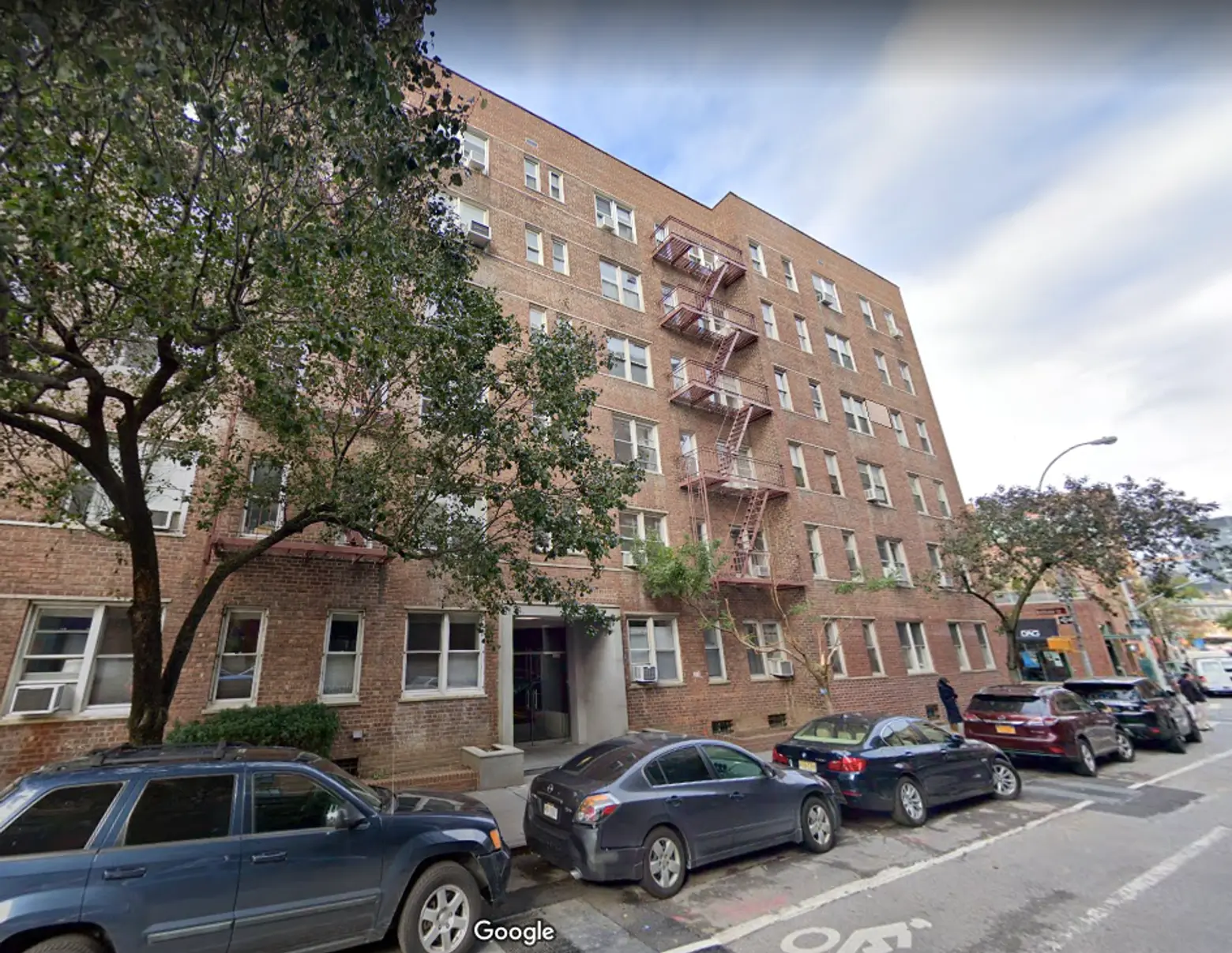
780 Greenwich Street; Map data © 2019 Google
11. Nile Rodgers, 780 Greenwich Street
The award-winning guitarist, composer, and producer Nile Rodgers (b. Sept. 19, 1952) co-founded the influential disco group Chic, produced music for artists as diverse as David Bowie, Sister Sledge, Daft Punk, Madonna, Diana Ross, and Disclosure, and played a pivotal role in the flowering and success of rap and hip hop. The son of heroin addicts, Rodgers moved around New York City and spent time in California as a child. In 1959, the family moved to 780 Greenwich Street, an apartment building completed in 1949, according to the Greenwich Village Historic District designation report.
Rodgers describes the experience of living in the Village in his autobiography, Le Freak: An Upside Down Story of Family, Disco, and Destiny. Of the far western part of the neighborhood where he lived, he said it then smelled of the “sewage-perfumed brine of the Hudson River that used to fill those cobblestoned streets.” Of his neighbors he said: “Many people in the building often smelled of linseed oil and turpentine; the girls wore their hair up in buns and walked with their toes turned out, radiating grace even when they were dumping the garbage. You could look into the windows of your neighbors and see and hear composers writing show and jazz tunes at their pianos, like something out of Hitchcock’s Rear Window.”
While Rodger’s upbringing was not without hardship, it is clear that spending his formative years in Greenwich Village had a strong impact on his music and life. Of his time at 780 Greenwich Street, he also said, “I remember legendary jazz musician Thelonious Monk coming over to buy one of my mother’s then-fashionable fur coats.”
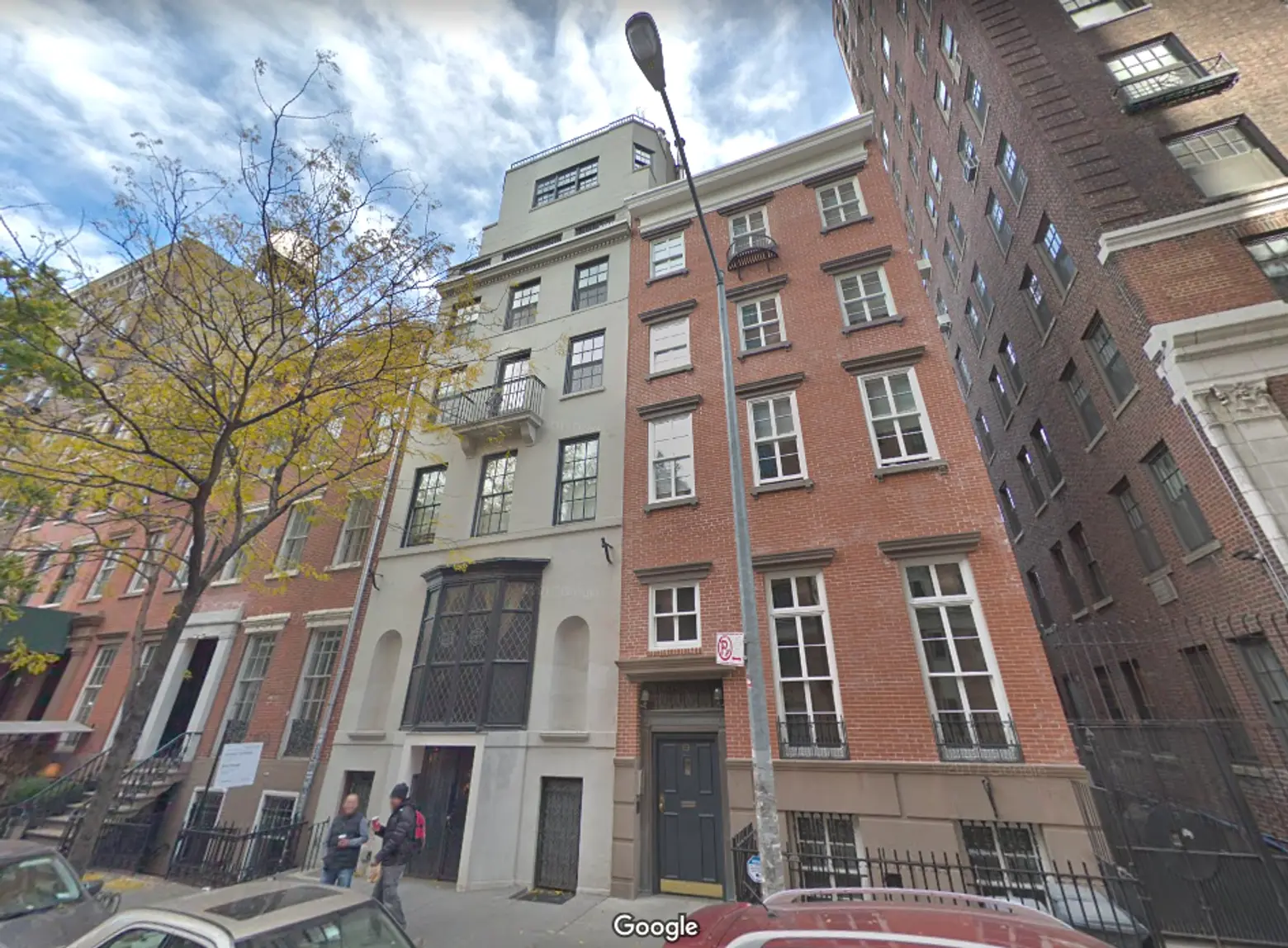
69 Washington Place; Map data © Google 2019
12. Mark Ronson, 69 Washington Place
Musician, producer, and DJ Mark Ronson lived in this rowhouse at 69 Washington Place just west of Washington Square from 2006 until 2012. Born on Sept. 4, 1975, in England, Ronson spent most of his childhood on the Upper West Side after his mother married rock star Mick Jones, who founded the band Foreigner in 1976. Ronson started out DJing as an NYU student in the 1990s and quickly became a mainstay in the downtown hip-hop and party circuit in the early 2000s. In 2006, he produced Amy Winehouse’s Back to Black album, for which he and Winehouse were awarded three Grammys. In 2014, his single “Uptown Funk” featuring Bruno Mars, topped charts in the UK, Ireland, Canada, and the United States.
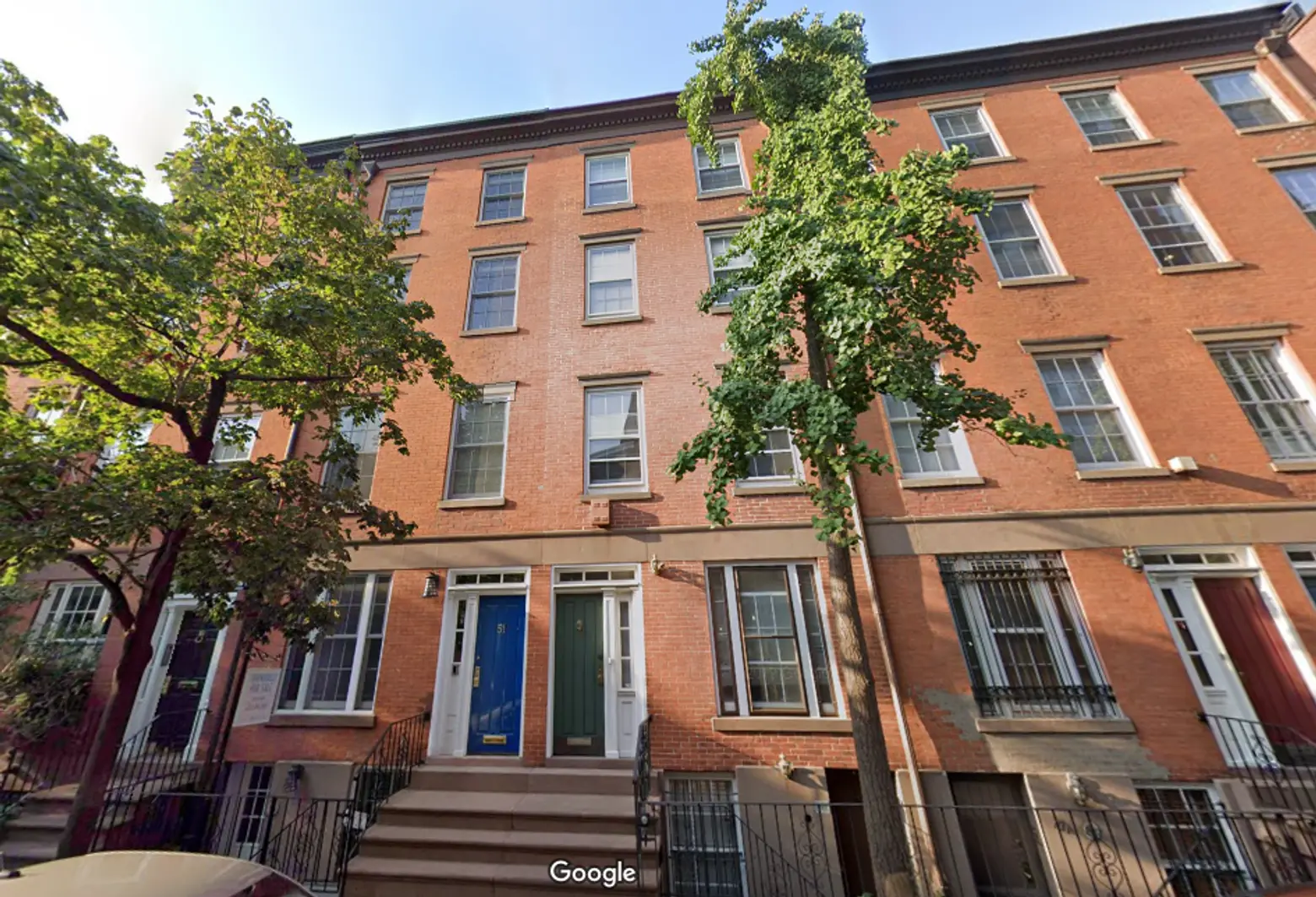
51 Horatio Street; Map data © 2019 Google
13. Todd Rundgren and Bebe Buell, 51 Horatio Street
Musician and producer Todd Rundgren lived here in the 1970s with Bebe Buell. Rundgren is known for his work in the band Utopia and as a solo artist. Bebe Buell was an up-and-coming model at the time. The two met through a modeling friend who had to stop by Rundgren’s house, then on East 13th Street in the East Village, on their way to a concert. Buell and Rundgren quickly began dating and moved in together on Horatio Street, although their relationship was not monogamous.
During her relationship with Rundgren, Buell was briefly involved with Iggy Pop, of whom she was a big fan already. They met at a New York Dolls concert when Iggy cut his head. Buell gave him a rag to use as a bandage and he immediately asked her where she lived. Much to her surprise, Iggy remembered the exact address and showed up at 51 Horatio Street the next day to see her.
Rundgren was leaving town for a concert that day and Iggy took his place at the apartment for a couple of weeks. Later, Buell and Steven Tyler, of Aerosmith, had a brief fling and Buell gave birth to Liv Tyler in 1977. Although Rundgren and Buell’s relationship did not last much longer, the two decided that Rundgren would be Liv’s “father” to protect her from Steven Tyler’s drug addiction. Rundgren remained faithful to this agreement despite Liv finding out the truth about her biological father when she was 11 years old.
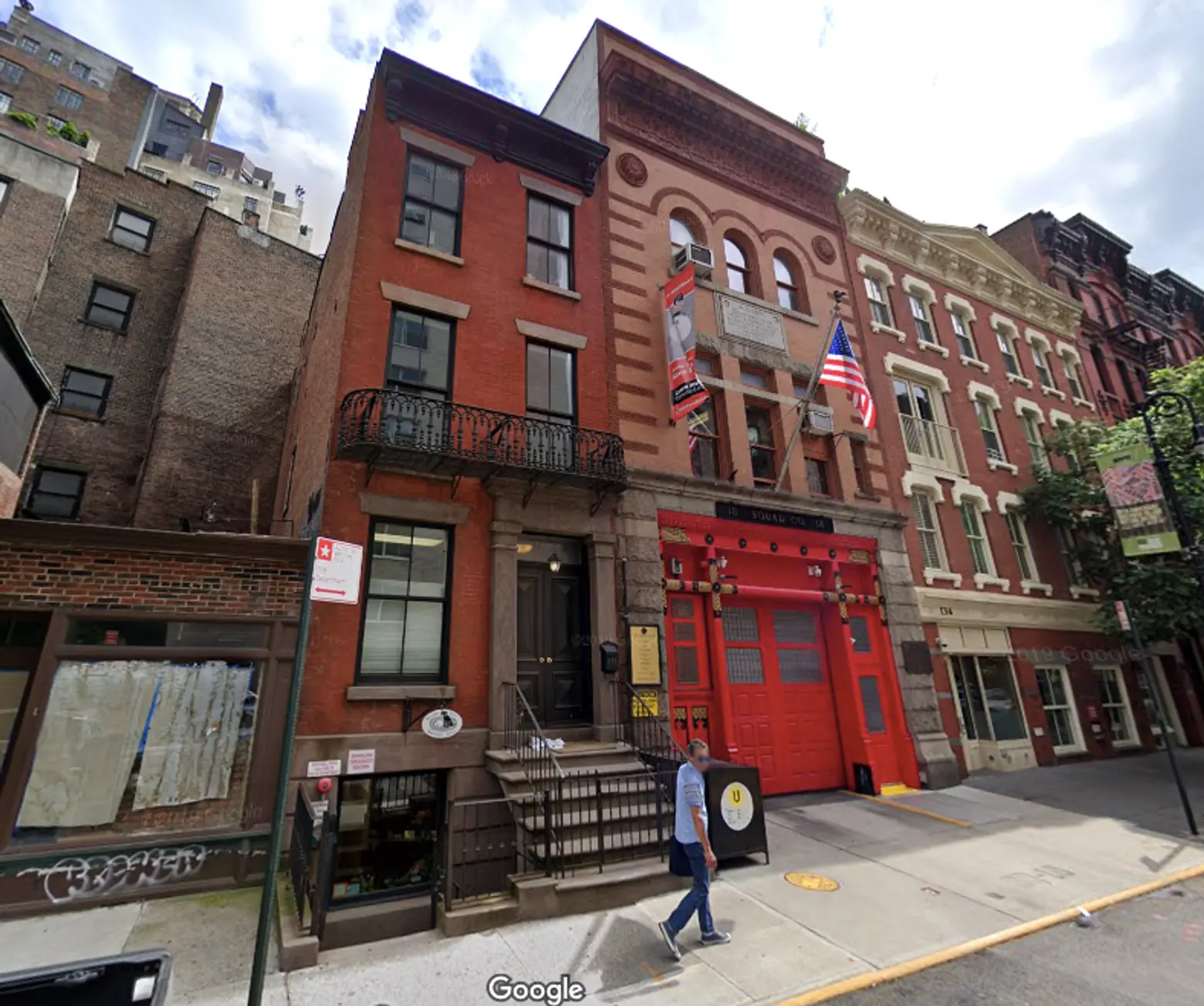
130 west 10th Street; Map data © 2019 Google
14. Pete Seeger and the Almanac Singers, 130 West 10th Street
Pete Seeger was born in 1919 in Manhattan. His parents were both classically trained musicians who spent part of their lives touring around the country with their three children. It was during this time that young Seeger discovered the banjo and folk music, or hillbilly music as it was sometimes called, which he would go on to pursue professionally upon his return to New York City in 1938.
He and Lee Hays played their first paying gig at the Jade Mountain Chinese restaurant in the East Village in 1941, at a lunch for refugees of the Spanish Civil War. Seeger and Hays soon went on to form the Almanac Singers, which would include other folk singers based in the Village at the time: Woody Guthrie, Millard Lampell, Sis Cunningham, Bess Lomax Hawes, Cisco Houston, Josh White, Burl Ives, Sam Gary, and others. Many of them, including Seeger, Hays, and Lampell, moved into 70 East 12th Street (demolished), where they established a commune of sorts which they called the “Almanac House.” Here they began the tradition of holding rent parties on the weekends called ‘hootenannies.’ These were parties that the Almanacs hosted to raise money to make rent and sometimes for labor causes.
After being evicted for not making rent from the East 12th Street loft, Seeger and the Almanacs relocated to 130 West 10th Street and established another Almanac House. By this time, due to his ties to the labor movement and the Communist Party, the FBI had begun to keep a close watch on Seeger. The rent parties continued at the 10th Street Almanac house and increased in popularity due to its new more central location. Some of the residents during this period included Alan Lomax, Butch Hawes, Agnes “Sis” Cunningham, Burl Ives, Arthur Stern, Cisco Houston, Sonny Terry, and Brownie McGhee.
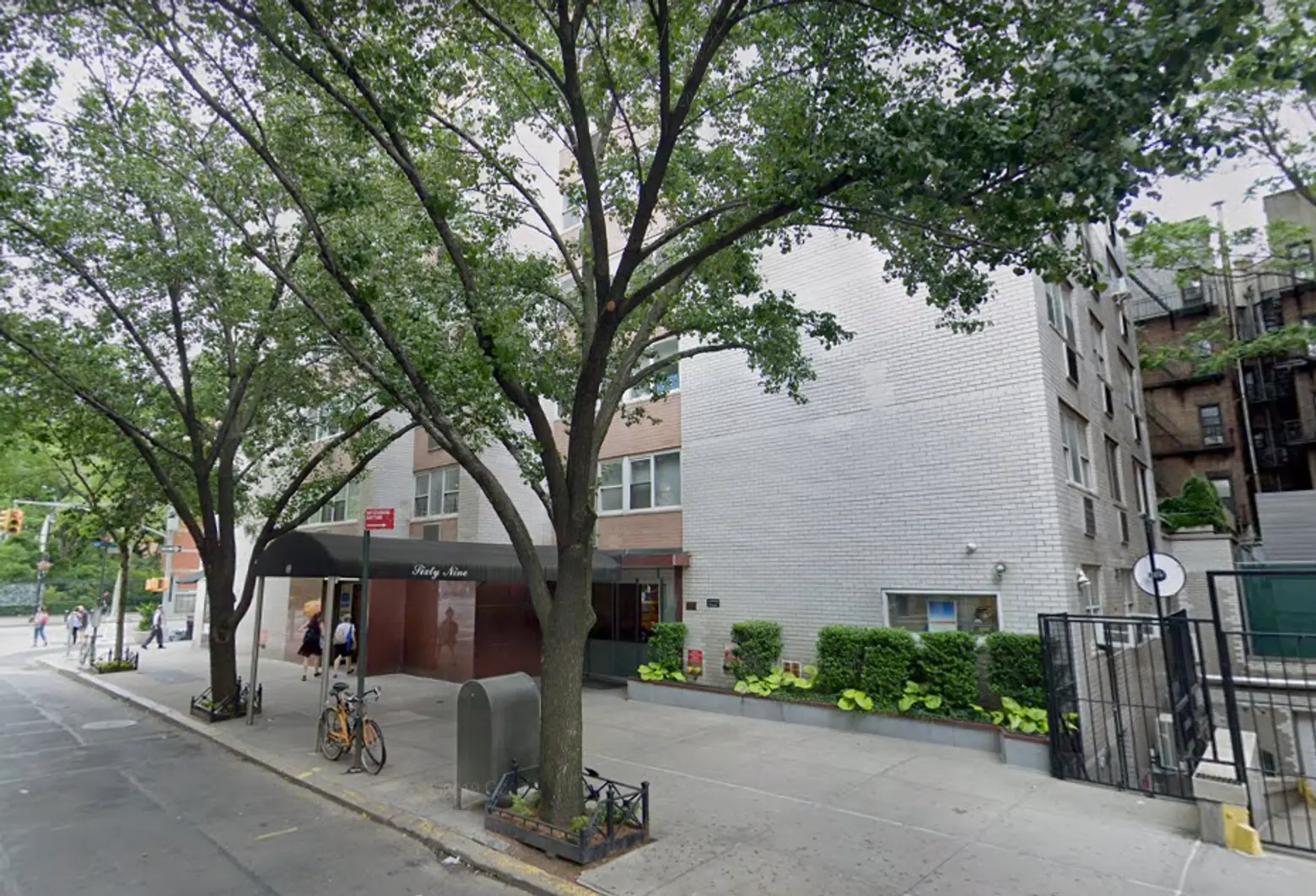
69 West 9th Street; Map data © 2019 Google
15. Barbra Streisand, 69 West 9th Street
It was here that Barbara Streisand met her future lover Barry Dennem, an actor from California who would encourage her to audition to sing at The Lion, a club in Greenwich Village. Streisand, who had just turned 18 and was still unknown, had been evicted from her previous apartment and was staying at different locations around the city. Dennem came from a well-to-do California family and was living alone at the recently-built apartment building at 69 West 9th Street on the corner of Sixth Avenue. A mutual friend, Carl Esser, brought Streisand to Dennem’s apartment. Dennem recognized her talent immediately and encouraged her to audition to perform at The Lion, just down the block at 62 West 9th Street. Other performers got their start there as well, including Bob Dylan, Jerry Stiller and Anne Meara, Woody Allen, and Joan Rivers.
After a few practice sessions, Barbra made her first public debut at The Lion in June of 1960. She won the Tuesday night talent show and began performing regularly at The Lion on Mondays and Saturdays. Her shows drew the attention of celebrities including Noel Coward, Veronica Lake, and Truman Capote. Eventually, her success at The Lion led her to perform at a bigger club, the Bon Soir, nearby at 38 West 8th Street. During this time, she began her relationship with Dennem and the two lived together at his apartment at 69 West 9th Street for several years.
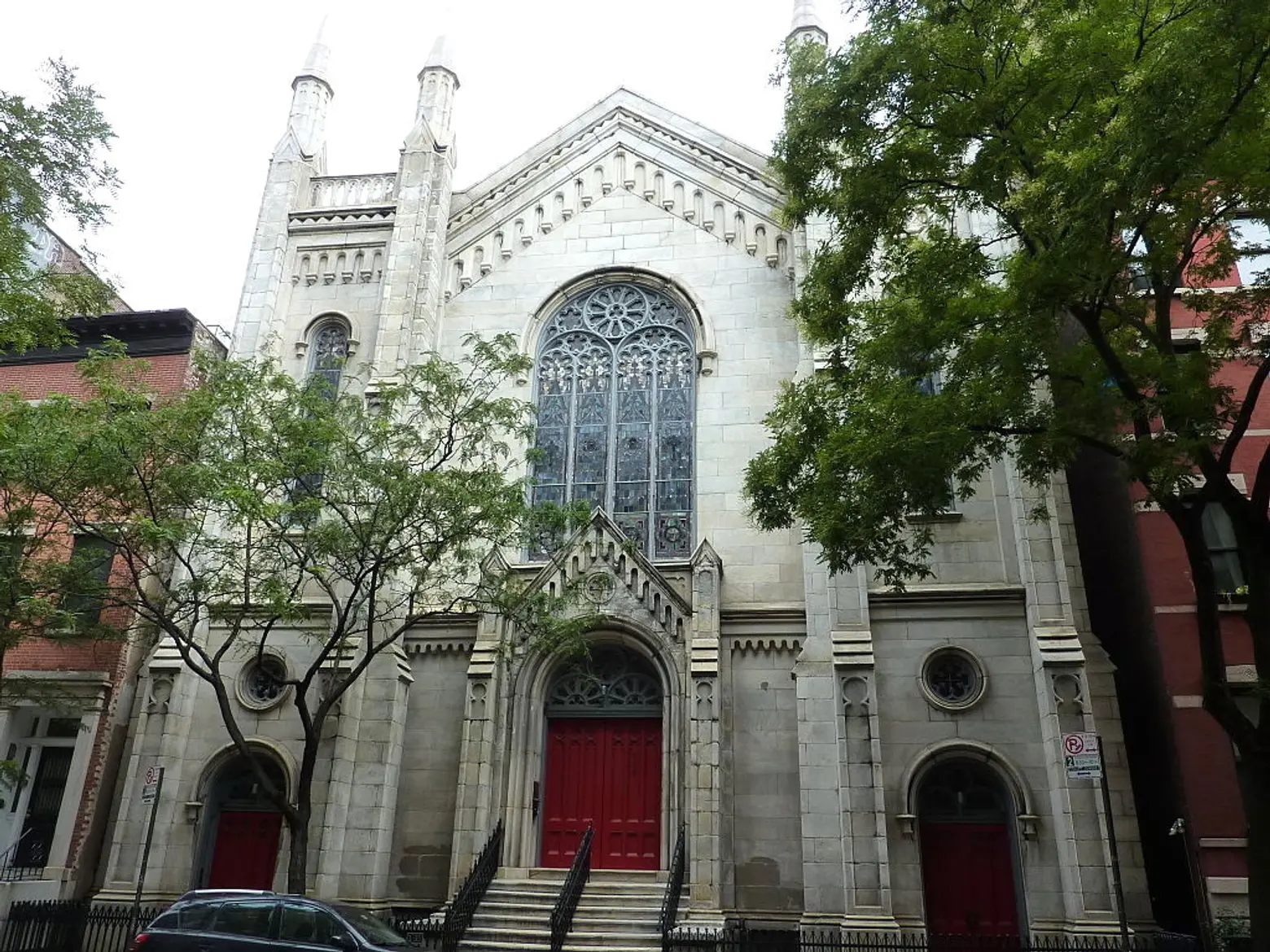
Washington Square Methodist Church; Photo via Wikimedia
16. Steven Van Zandt, 135 West 4th Street
Steve Van Zandt (Steven Lento) was born on November 22, 1950, and first gained fame as a musician in Bruce Springsteen’s E Street Band, which he joined in 1975. Known as Little Steven or Miami Steve, he left the band for several years in the 1980s to pursue a solo career, through which he was also able to express his political views. In 1985, he assembled a group of artists to create an Anti-Apartheid album called Sun City to raise money for numerous Anti-Apartheid causes.
More recently, Van Zandt played Silvio Dante in the television show “The Sopranos” from 1999 until 2007. In 2007, he also founded the Rock and Roll Forever Foundation, a non-profit which promotes teaching music in public schools by providing free lesson plans and educational materials to teachers. Around this time, he purchased a penthouse in the former Washington Square Methodist Church. Built in 1860 in the early Romanesque Revival style by Charles Hadden, in 2006 it was converted to residences.
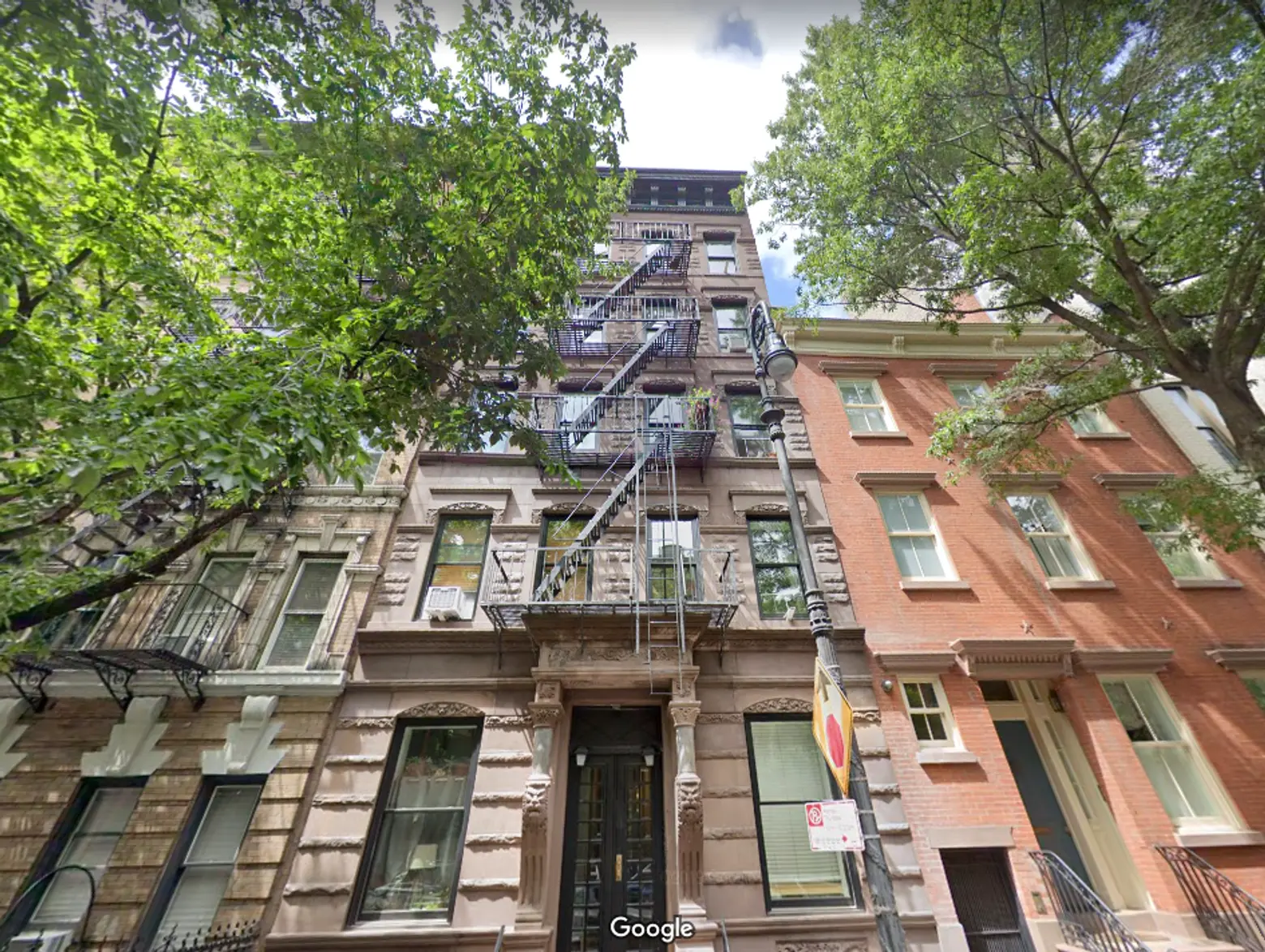
63 Bank Street; Map data © 2019 Google
17. Sid Vicious, 63 Bank Street
On February 1st, 1979, Sex Pistols bassist Sid Vicious was found dead of a heroin overdose in an apartment at 63 Bank Street. Born John Simon Ritchie, Vicious (as he came to be known) joined the band in 1977, taking over for bassist Glen Matlock. Vicious notoriously faked his musical ability, with his own bandmates often unplugging his amp. A brooding street kid from London, he appeared to be the perfect embodiment of the punk rock attitude. His downward spiral, however, started not long after joining the Pistols and meeting girlfriend Nancy Spungen. Vicious and Spungen’s relationship was extremely volatile, due in large part to both of their intense heroin addictions. In January of 1978, their deterioration spread to the group and the Sex Pistols broke up. Nancy became her boyfriend’s manager as he embarked on a solo career. During this time, Vicious found success playing gigs at Max’s Kansas City.
In October of that year, Spungen was found dead in Room 100 of the Chelsea Hotel, which she and Sid had been sharing. She bled to death from a single stab wound to the abdomen — a wound inflicted by a knife purchased by Vicious. He was charged with murder and attempted to slit his wrists in prison. He was soon released on bail and just two months later, he was back behind bars at Rikers for assaulting Patti Smith’s brother in a bar, cutting his face with a broken bottle. On February 1, 1979, after completing a rehab and detox program, he was again released on bail, this time for $50,000. Just hours later he attended a party in Greenwich Village that would end his life.
63 Bank Street was the home of Sid’s new girlfriend, actress Michele Robison, whom he met a year earlier on the day he was released from Bellevue after slitting his wrists. The party that evening was thrown to celebrate his making bail. He was clean now, but his mother, Anne Beverly, a fellow addict, had heroin delivered to the party that night.
The supply was 80 percent pure and at midnight, Sid started shooting up again. According to BBC, “Shortly after taking the drug Mr. Vicious, 21, collapsed, went into a seizure and displayed the symptoms of overdose. He revived 40 minutes later and went to bed with his girlfriend, Michelle Robinson, at about 0300 local time. He was found dead the next morning.” As per a request from a previous suicide note, Sid’s ashes were scattered over Nancy Spungen’s grave.
RELATED:
- The long cultural and musical history of Jimi Hendrix’s Electric Lady Studios in Greenwich Village
- Iconic album covers of Greenwich Village and the East Village: Then and now
- 12 social change champions of Greenwich Village
+++
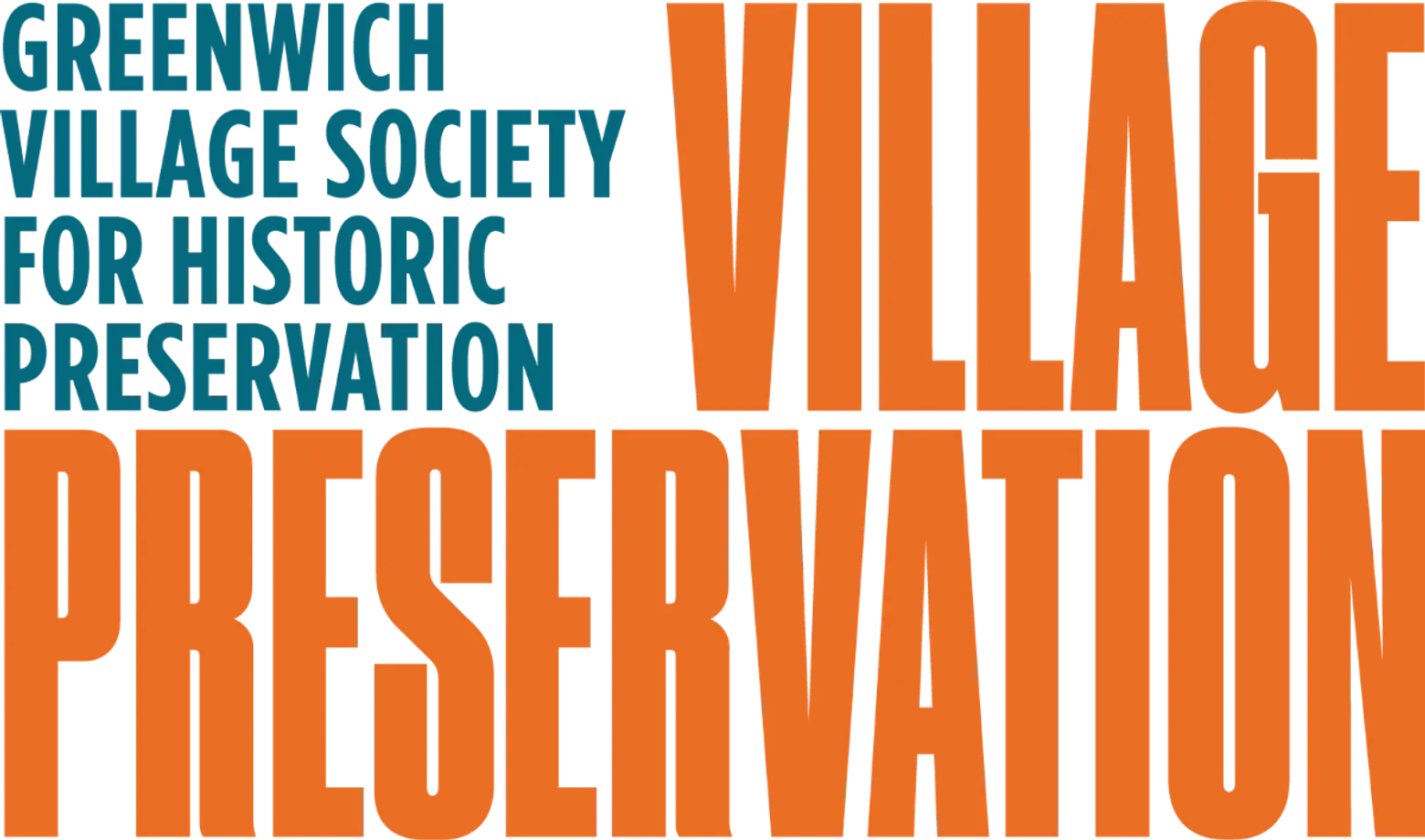
This post comes from Village Preservation. Since 1980, Village Preservation has been the community’s leading advocate for preserving the cultural and architectural heritage of Greenwich Village, the East Village, and Noho, working to prevent inappropriate development, expand landmark protection, and create programming for adults and children that promotes these neighborhoods’ unique historic features. Read more history pieces on their blog Off the Grid
This year marks the 50th anniversary of the designation of the Greenwich Village Historic District. One of the city’s oldest and largest landmark districts, it’s a treasure trove of history, culture, and architecture. Village Preservation is spending 2019 marking this anniversary with events, lectures, and new interactive online resources. This is part of a series of posts about the Greenwich Village Historic District marking its golden anniversary.
